
Introduction
It’s that time of year where history’s most famous CEO steps up to deliver on his annual project. Santa Claus is a cultural behemoth. Hardly a soul on Earth is unaware of his specific approach to leadership, replete with elves, reindeer, sleighs and coal.
But is Santa a good leader? Where does he impress and where could he improve? In what areas can we learn from Santa and in what areas could he perhaps do with updating his approach?
Santa delivers
The primary positive of Santa’s leadership, one that many a budding CEO could learn from, is that he sets clear goals and always hits his deadline.
Every year, Santa has the job of delivering presents to every child in the world. And every year, he does it. Now, there may be questions regarding his timing. It would appear that Santa suffers from the same tendency to leave his major tasks to the last minute as many of us. He has a whole year to deliver on his project and yet, without fail, does not get around to distribution until Christmas Eve.
That said, Santa never misses a deadline. Every Christmas morning, children the world over awaken to their new presents under the tree. The truth is that some of us thrive under the pressure of an impending deadline. One might have thought that after centuries of the same deliverable, Santa would learn his lesson and get his act together, delivering methodically throughout the year rather than needing to unload everything in one final dump. However, it would appear that no matter how many times he’s done it, Santa needs to feel that extra spike of pressure as the deadline looms ever closer in order to get the job done. It’s a trait that for many of us is a little too relatable.
Santa gets stuck in
Too often CEOs are happy to let their team do all the work, only to step in and take the credit when all is done (or point the finger of blame if things go wrong). While Santa is guilty of letting his elves undertake the brunt of the work through the year (arguably just the result of good delegation), when it comes time to deliver, Santa is there front and centre, riding the sleigh and taking responsibility. He could no doubt entrust one of the elves with this responsibility or even outsource the task to a third-party operation – I’m sure Tony McKCoy, Lewis Hamilton or any other famed steerer of steed or cart would love the opportunity – but no. Santa is there, getting his hands dirty when it matters most.
That said, Santa’s decision to lead the line on delivery night does speak to one of his baser traits: taking all the credit.
As noted, the elves are slaving away all year to ensure everything is in order for the big man to push things over the line on the day. But who is it that gets all the focus? Santa, of course. The media pour their attention on him in large part due to his clever branding (red suit, large beard, an air of eccentricity). But would it kill him once in a while to acknowledge the role his elves and reindeer play in providing a platform for his success? Seemingly, a touch of humility is too much to ask; he’d rather bask in all the glory without giving credit to his team.
Good leaders know that they are only as good as their team and that acknowledging their staff’s hard work goes a long way.
Clear communication
As well as consistently hitting his deadline, Santa is always crystal clear on his brief, both to staff and the wider public. His staff know that their role is to deliver presents to every child in the world by Christmas Day. Children know that he’s making a list and checking it twice, and that good behaviour will land them on the nice list, while naughty behaviour…well, it doesn’t bear thinking about.
Of course, critics could well point to Santa’s naughty and nice list as an example of poor leadership, attempting to incentivise through fear. Placing a lump of coal in the stocking of children he deems unworthy certainly feels draconian by modern standards. That said, his strongman leadership tends to yield results, with far more nice kids than naughty and very little coal doled out in earnest.
A loyal workforce
Despite not dispersing credit as generously as he could, Santa has cultivated a loyal workforce. His elves and reindeer seem to stick with him, with very little turnover of staff. That suggests that Santa has made Lapland an enjoyable place to work, probably with an enviable work-life balance, decent salary progression and maybe even a ping pong table.
However, it must be noted that there’s very little room for growth within Santa’s organisation. He’s the top dog and everyone under him seems to be working in a fixed position, with no higher rung of the ladder they can climb to by playing their cards right. Perhaps should he one day choose to retire, we may witness a Succession-esque bid for power from a series of his most ruthless elves, but for now the ceiling for career progression in Lapland seems low and unbending.
Lack of diversity
The one obvious example of a promotion in Santa’s operation is Rudolph (the red nosed reindeer, for those in doubt). However, his upgrading to the front of the sleigh seems if anything to be the exception that proves the rule, and ultimately to highlight another of Santa’s managerial deficiencies: a lack of diversity.
Prior to his do-or-die promotion, reports indicate that Rudolph was brutally mocked for the colour and glowiness of his nose. It would appear that Santa has cultivated a toxic work environment with a lack of diversity in personnel and thought. After all, the bulk of the legwork is conducted solely by elves. Perhaps by opening up to other creatures – goblins, ghouls, influencers etc. – we might see a greater plurality of thought amongst Santa’s workforce, rather than the hegemonic current state of play.
Innovation
Santa has shown a willingness to embrace modernity in his gift-giving, always up to speed with modern trends. That spirit of innovation, though, is seriously lacking when it comes to his process.
As any good business knows, innovation is about more than just product and output, it’s about the process by which outcomes are achieved. How can we streamline our operation so as to ensure maximum productivity and staff satisfaction?
Santa’s methods of delivery have served him well, and there is an argument to be made that if it ain’t broke, don’t fix it. That said, perhaps, in a changing world, there is a more operationally efficient way to achieve his goals than flying a sleigh through the sky at night with nothing but a glowing nose for guidance and likely no seatbelts. Not to mention the physical strain he places on his reindeer, who are probably only one trip to PETA away from putting an end to this operation for good. Even tried and tested methods need updating every once in a while.
Accountability
As previously noted, Santa is more than happy to accept plaudits for the operation without sufficiently doling out credit to his staff. But when things go wrong, where is he?
By which I mean, when I was ten years-old, all I wanted for Christmas was the new David Bowie album. And yet, when Christmas Day came around, it was starkly lacking. In its place was a jumper and a book. While these days a jumper and book would be my ideal gifts, back then such presents bordered on a declaration of war.
And yet, when I wanted to raise my concerns with Santa regarding his dismissive attitude to the carefully curated wish list I sent him prior to the big day, he was unreachable. Good leaders are accountable for the good and bad of their operation. In this regard, Santa falls short, and ten year-old me is yet to forgive him.
In summary
If you’re running a global delivery service built on the backs of what arguably constitutes slave labour (here’s looking at you, Jeff Bezos), then Santa is and forever will be the model to follow. However, for a normal CEO, more humility, accountability, championing of diversity, and coal-free incentivisation methods may be required.

Introduction
The year is drawing to a close. Christmas lights line the façades of urban architecture while the dulcet tones of Mariah Carey and slurred poetry of the late, great Shane MacGowan offer a familiar festive soundtrack. It’s a time for reflection, personal and professional.
As we reflect, we can’t help but be caught up in questions as to how our year has gone – have we achieved everything we set out to? Where did we shine? Where did we fall short? How can we know if we’re progressing?
Self-evaluation
As with all self-reflection, such questions are difficult to answer objectively. Still, it’s worth taking the time to assess your year as measuredly as you are able to. Coach Harriet Minter says that conducting your own end of year review is only useful if you can walk the line between self-castigation and self-congratulation [1].
Of course, if you set goals at the turn of the previous year, your results will be easier to measure. You can roll through your objectives and see which you achieved. For those you didn’t, ask why, though not in a punitive sense. Rather, look at the aim and assess whether there is something you can do next year to ensure you reach this target or whether fulfilling it was actually out of your control.
It’s perfectly possible that your goals changed throughout the year and so by December you were no longer pursuing certain aims. As John Maynard Keynes said, “When the facts change, I change my mind” [2]. It’s useful to remember when setting goals that we need not be slaves to them throughout the year. Life and work are at the mercy of constant fluctuations and external shifts. There is nothing to be gained by remaining fixed on a target that has lost its relevance.
If you struggle with self-assessment – either finding yourself too generous or too harsh in your appraisal – Minter suggests you picture a great boss and try to think what they would say [3]. Good leaders tend to know how to motivate their employees and celebrate their strengths while also providing constructive feedback as to how they can improve going forwards. Mimic that and you’re halfway there.
Measuring progress, not achievements
In The Desire Map: A Guide to Creating Goals with Soul, author Danielle LaPorte says that we set ourselves goals in order to achieve a feeling we want [4]. For example, if we seek a promotion, as well as the fiscal benefits it affords, we are also hoping to achieve a feeling of pride that our work is being recognised. When assessing our end-of-year achievements, it’s important to focus on the latter as much as the former. Perhaps you did not get the promotion, the pay rise, the new office, but did you get the feeling that you are making progress? Did you make steps in the right direction? This, in itself, can be worth celebrating.
That’s not to say one should simply accept being overlooked, especially if you’re quite certain that your efforts and achievements throughout the year are deserving of more respect than they’ve been shown. If that’s the case, vocalise it (in a courteous, professional manner, of course, open to hearing why your employer potentially disagrees).
But for the years in which you outwardly achieve little, have none of the obvious markers of progress to show for your efforts, it’s still worth giving yourself credit for effort and achievement. That can sound condescending, of course, like draping a participation medal around your own neck, but it is valuable. We all have years that don’t quite go our way. It could be a matter of timing, we could be part of a team that doesn’t suit us, we could be dealing with something in our personal life that bleeds into our work performance – these things happen. So long as you can look back at your performance and say, “Well, I gave it all I could, but this time things didn’t go my way”, that’s enough.
If you conclude that, in fact, you didn’t give your all, it might be worth asking why not and what steps you can take next year to improve.
External analysis
Sometimes the end of the year brings about not just self-analysis but external evaluation too. Some companies choose to do this at the end of the fiscal year, others the end of the calendar year, others around employee contracts. Regardless, performance reviews can be nerve wracking for even the best of employees. Often they are seen as something to survive, with employees and employers alike thinking “how can I get through this?” for another year, rather than viewing them as the opportunities for growth they can be if handled properly.
A 2018 McKinsey survey found that the majority of CEOs don’t find the appraisal process in their companies helpful when it comes to identifying top performers, while more than half of employees don’t believe that their managers get performance degrees right [5]. Similarly, a Gallup study found that only one in five employees agree that their company’s performance practices motivate them [6].
The lack of benefits performance reviews generally afford paired with the anxiety they tend to foster could suggest that the practice is overdue a place on the scrap pile. But amongst firms who tried to rid themselves of such measures, a separate McKinsey study found that when “organisations scrapped the performance ratings, they found a need for a form of annual documented administrative evaluation to make employment decisions, such as promotions and raises. To address this need, these organisations often implemented ‘ghost’ ratings—a system of evaluation that is, ultimately, just another annual performance rating” [7].
Essentially, then, the question isn’t “should we get rid of performance reviews?” Rather, it’s “how can we make them more effective, for employer and employee alike?”
Making the most of performance reviews
Writing in Forbes, Chris Lee, President of Ventureblick, says that in his experience employees spend too much time in performance reviews bragging about their achievements and strengths. Instead of embarking on a self-promotion sales initiative, he recommends employees list what they consider to be their weaknesses as well as offering proactive proposals for areas of development.
“The trick here,” he writes, “is that you are setting yourself up to demonstrate your self-awareness and readiness for further career advancement” [8]. In practice, that means that rather than saying, “I deserve to be given a leadership position for X, Y and Z,” you say, “I have developed strong project management skills in the past years, but I’m still lacking people management experience. I’d like to develop this facet and lead a small team.”
Taking this approach shows a level of self-awareness, proves you acknowledge your weaknesses (rather than grifting and pretending everything you touch turns to gold), and demonstrates your capacity for taking the initiative to improve an area of weakness.
Equally, Lee writes, you must listen to your manager’s feedback and not get defensive. As well as showing maturity and level-headedness (both valuable), you’re also making your boss’s life easier. “A boss I respected highly once told me that performance reviews are psychologically stressful for him,” Lee says. Many of his staff would come in ready for “bruising battle,” determined to show their worth and fight their corner.
While one should always be willing to stick up for oneself, an inability to take constructive criticism is a major red flag for any employer. The point of a performance review is to learn what you’re doing well, what you could do better, and how to do so next time. If all you’re after from your appraisal is a stream of praise, the implication is you think there’s nowhere you can improve, which is not the case for any of us. Take the feedback, listen to it and respond accordingly. If you really think it’s unfair, perhaps think about it further before arranging a follow-up meeting with your boss where you can explain why you disagree, and then learn whether they had indeed overlooked some of your achievements or you really are at odds over your performance.
For employers, it’s important to remember that for a lot of your staff this is the one opportunity they get to truly hear what you think of their performance. Give the moment the respect it deserves.
When giving feedback, be specific. Writing in Harvard Business Review, Frank V. Cespedes, a senior lecturer at Harvard Business School and the author of Sales Management That Works: How to Sell in a World That Never Stops Changing, observes that, “Too much performance feedback is of the “do good and avoid evil” variety. That may sound harmless, but overly general feedback increases feelings of defensiveness, rather than openness to behaviour change, because it involves broad judgments and invites counterpunching rather than discussion” [9].
Giving specific feedback – i.e. you didn’t mention X, Y and Z in this presentation, or you kept interrupting a client during a meeting – “makes it easier to receive negative comments and take corrective action because both manager and employee can now concentrate on elements that can be improved” [10].
The most conclusive area in which performance reviews often fall short is in setting employees up with a clear plan moving forward. Inbuilt to the “let’s just get through this” mentality is the idea that once the review is over, that’s it for another year. Instead, Cespedes argues, “A review is incomplete without a discussion of next steps in which both parties take appropriate responsibility for change options” [11]. He goes on to say that the bulk of this responsibility rests with the manager. In what areas do they want to see progress from their employees in the coming months and year? How do they want to bring those changes about? Are there courses they can offer? Or mentorship sessions? More regular feedback so they can check the employee is making steps in the right direction?
Even something as simple as a regular reminder of the goal set in the performance review can be enough. Various studies, in areas ranging from health care to voting to energy usage to drinking habits, find that these reminders significantly affect behaviour and improve outcomes [12].
Providing opportunities for growth and development is a pivotal part of a leader’s role. Fail to provide sufficient routes to improvement and you shouldn’t be surprised to see employees looking for the exit. As the old saying goes, “people don’t quit jobs, they quit managers.”
Assessing progress
As the year draws to a close, it can be useful to assess whether we made everything we wanted of it. That can be done through self-assessment, handled as objectively as we can manage, or through a more formal performance review. It’s the job of both the worker and boss in question to make these reviews more than just a tick-box exercise and instead use them as a launchpad for further development for the year ahead. That means honest assessment, constructive, specific feedback, and most importantly setting out a framework through which improvement can be made. Proper self-assessment leads to proper self-development, which benefits the individual and the company alike.
More on Assessment
Refining Performance Assessments: Reducing Recency Bias for Superior Evaluations
References
[1] https://www.forbes.com/sites/sophiamatveeva/2019/12/24/how-to-review-your-year/?sh=698d70b1140a
[3] https://www.forbes.com/sites/sophiamatveeva/2019/12/24/how-to-review-your-year/?sh=698d70b1140a
[4] https://www.forbes.com/sites/sophiamatveeva/2019/12/24/how-to-review-your-year/?sh=698d70b1140a
[6] https://www.gallup.com/workplace/238064/re-engineering-performance-management.aspx
[7] https://www.mckinsey.com/business-functions/people-and-organizational-performance/our-insights
[9] https://hbr.org/2022/07/how-to-conduct-a-great-performance-review
[10] https://hbr.org/2022/07/how-to-conduct-a-great-performance-review
[11] https://hbr.org/2022/07/how-to-conduct-a-great-performance-review
[12] https://hbr.org/2022/07/how-to-conduct-a-great-performance-review

Introduction
In the dynamic core of Silicon Valley, a start-up bursting with ambition and innovation faces an unexpected global challenge: a pandemic that reshapes economies and alters consumer behaviours overnight. This scenario epitomises the modern business landscape’s volatile and unpredictable nature. Here, traditional strategies rigorously test their mettle against the capricious forces of a world defined by its volatility, uncertainty, complexity, and ambiguity – the VUCA world. This term, originating in the military and now deeply resonant in business discourse, frames our exploration of the 21st-century business environment’s challenges and opportunities.
Chapter 1: Dissecting the VUCA landscape
In the fast-paced, high-stakes world of contemporary business, understanding VUCA – Volatility, Uncertainty, Complexity, and Ambiguity – is crucial for any organisation aspiring to survive and thrive. This section delves into these elements, weaving together real-world examples and strategic insights.
Volatility: Riding the economic tsunamis
Volatility is the chameleon of the business world, characterised by rapid, unpredictable changes. With its extreme price fluctuations, the cryptocurrency market is a stark example. Companies like Coinbase have flourished amidst this volatility by creating resilient, user-friendly platforms and diversifying their services, converting volatility from a formidable threat into a lucrative opportunity.
Uncertainty: Charting unknown waters
Where predictability dwindles, uncertainty thrives. Netflix’s bold transition in the mid-2000s from DVD rentals to online streaming is a testament to this. This leap into uncharted territory, powered by forward-thinking and a flexible business model, propelled Netflix to survive and revolutionise the entertainment industry.
Complexity: The intricate web of modern business
Business complexity arises from the dense interplay of numerous factors and variables. The global supply chain, a complex web involving suppliers, manufacturers, and distributors across continents, exemplifies this. Apple Inc.’s strategic management of its supply chain is a masterclass in navigating complexity, turning a potential logistical nightmare into a critical competitive edge.
Ambiguity: Navigating the mists of uncertainty
Ambiguity manifests in scenarios where information is limited, and the path forward is hazy. Google’s venture into autonomous vehicles is a prime example. Google embarks on this journey amidst nascent legal frameworks and uncertain public acceptance, pioneering a field where the rules are still being written.
In these cases, the companies involved have not just confronted their respective VUCA challenges; they have embraced and exploited them, transforming potential vulnerabilities into strengths. As a multifaceted concept, VUCA is integral in navigating challenges, ensuring sustained success, and fostering perseverance in turbulent times. This section has demonstrated that, despite their daunting nature, these elements can serve as powerful catalysts for developing innovative strategies and emerging ground-breaking leadership.
Chapter 2: Strategic responses to VUCA
In a world where the only constant is change, engaging in traditional strategic planning often resembles the challenge of trying to build a bridge during an earthquake. Elaborate five-year plans and detailed business models presuppose a level of stability that the VUCA world often mocks. These tools are like navigating a labyrinth that reshapes itself with every step. The real question isn’t the accuracy of the compass but whether a compass is the right tool in this ever-changing maze.
Enter agile methodologies, a philosophy nurtured in the trenches of software development but increasingly relevant across the broader business landscape. Agile transcends a mere collection of practices; it embodies a mindset that embraces change as an inevitable, integral part of the journey. It fosters adaptability, rapid feedback loops, and iterative development. In VUCA conditions, where the path ahead is often veiled in fog, agile strategies allow businesses to move forward in measured, confident steps, continuously inspecting and adapting their approach.
Consider a technology start-up navigating the whirlwind of market changes. Rather than a fixed product launch plan, they adopt a ‘release early, release often’ philosophy. Their product evolves through constant iteration, incorporating user feedback, responding to emerging trends, and pivoting when necessary. By choosing responsiveness over rigidity, the company ensures its product becomes more resilient and closely aligned with the market’s pulse.
Leadership in a VUCA world also takes on a different hue. The most effective leaders are those who find comfort in discomfort. They stand firm on the shifting sands of uncertainty, making decisions not by predicting the future but by preparing to meet it in various forms. These leaders often exhibit a high tolerance for ambiguity, a penchant for calculated risk-taking, and a knack for strategic foresight. They are adept at navigating the currents of volatility and discerning the signal from the noise in a complex world. Consider the CEO of a global logistics company that decentralises decision-making to empower regional managers amidst unpredictable international trade tensions. This leader understands that in a VUCA world, those closest to the action often have the best perspective for making swift, informed decisions.
Effectively navigating VUCA demands a blend of agile practices and a leadership style that relinquishes the illusion of control. It’s about crafting a strategy that’s less a rigid plan and more a flexible guide for dynamic decision-making – a strategy that points to true north but allows for various paths to reach it. Organisations that thrive use VUCA not as an excuse for paralysis but as a springboard for innovation, resilience, and transformation.
Chapter 3: Turning VUCA into opportunity
A hidden treasure lies in the swirling chaos of the VUCA world – the promise of innovation and a bastion of competitive advantage. Companies that recognise this don’t just aim to withstand the turmoil; they strive to harness it, grow from it, and emerge as leaders because of it.
In the VUCA world, the concept of antifragility comes to the forefront. This refers to systems that improve when exposed to shocks and stressors, turning potential disruptions into catalysts for growth. By embracing the upheaval of disruption, these organisations transform challenges into stepping stones for success.
Case Studies: VUCA champions
Amazon and Complexity: Amazon’s venture into cloud computing with AWS, initially seen as a departure from its retail roots, embraced the uncertainty of technological needs and propelled the company to a leadership position in cloud computing. AWS’s success clearly demonstrates how engaging with complexity can uncover new business frontiers.
Tesla and Volatility: Under Elon Musk’s leadership, Tesla has excelled by navigating the waves of volatility. The company’s unwavering commitment to innovation – from advanced battery technology to autonomous driving – has seen it shape and adapt to the evolving automotive sector. Tesla’s journey is a prime example of how volatility can fuel industry leadership.
Zoom and Ambiguity: Zoom’s rise during the pandemic illustrates triumph over ambiguity. As the world pivoted to remote interactions, Zoom swiftly adapted its platform to meet burgeoning demand across various sectors, becoming a staple in virtual communication.
These narratives show how embracing the inherent aspects of the VUCA environment can be a powerful driver for growth and innovation. Amazon’s strategic risk in a new domain, Tesla’s utilisation of market volatility for progressive innovation, and Zoom’s agile response to a global shift are all testament to the potential of antifragile approaches in business.
Chapter 4: Preparing for a VUCA future
As businesses sail the uncharted waters of a VUCA world, the challenge extends beyond mere survival tactics. It calls for cultivating capacities and competencies that transform volatility, uncertainty, complexity, and ambiguity into instruments of strategic empowerment.
Cultivating a resilient and agile culture
They are thriving amid flux demands that organisations champion agility and resilience. To succeed in the VUCA world, companies must develop a skilled, adaptable, creative, and proficient workforce in critical thinking. It’s crucial to cultivate an environment that values continuous learning, one in which employees are consistently encouraged to keep up-to-date with industry trends and technological advancements.” Building a culture of constant learning, where employees are encouraged to stay abreast of industry trends and technological advances, is essential. Such a learning environment is strengthened by fostering collaboration and ensuring open communication, empowering teams to navigate complex and ambiguous scenarios with collective wisdom.
Harnessing the might of technology and analytics
In the crucible of VUCA, data is the alchemist’s stone, turning uncertainty into clarity. Leveraging technology and data analytics is crucial for informed decision-making. Advanced analytics, powered by AI and machine learning, dissect vast datasets to unveil trends and patterns, equipping businesses to anticipate market shifts and understand customer behaviour nuances.
Moreover, investing in robust digital infrastructure drives operational efficiency and ensures resilience. Tools that enable remote collaboration and flexibility are indispensable, fortifying businesses against unforeseen disruptions.
Strategic foresight through scenario planning
Scenario planning is a strategic foresight method, illuminating paths through the VUCA fog. Organisations can develop flexible strategies to adapt to various potential futures by envisioning different possible futures. This proactive approach minimises response lag, allowing businesses to transition smoothly, akin to a well-rehearsed ballet rather than a puppet’s reactive jerks.
Embracing the VUCA horizon
Looking ahead, it’s vital for leaders to actively engage with the VUCA elements, not just recognise them. Stepping beyond the comfort of predictability, they must view the dynamic VUCA elements as harbingers of opportunity. An ethos of innovation should permeate the organisation, where calculated risk-taking is the norm and change is the catalyst for growth.
Conclusion: Charting a course through VUCA waters
In the unfolding narrative of the 21st-century marketplace, the VUCA world emerges not as a transient challenge but as the sea upon which businesses must navigate. From innovative Silicon Valley start-ups to established global conglomerates, the relentless tempest of Volatility, Uncertainty, Complexity, and Ambiguity is a constant presence. Yet, within this tempest, the most significant opportunities for innovation, strategic success, and transformative leadership are hidden.
Businesses thriving in this environment do not just react to change; they anticipate, adapt, and harness it as a driving force. The stories of companies like Coinbase, Netflix, Apple, Google, Amazon, Tesla, and Zoom demonstrate that navigating VUCA conditions can turn potential vulnerabilities into unmatched strengths. These organisations show us that the heart of chaos is not just a challenge to be overcome but a landscape rich with opportunities for growth and leadership.
As we move into an increasingly complex and unpredictable future, the key takeaway for businesses is the importance of cultivating an agile and resilient mindset. Embracing change as a constant, leveraging technology and data for strategic insights, and fostering a culture where innovation and adaptability are prioritised are essential strategies for thriving in a VUCA world. Scenario planning and strategic foresight become invaluable tools, enabling organisations to envision multiple futures and prepare for them with flexibility and agility.
Leadership in a VUCA world is less about commanding with absolute certainty and more about guiding with adaptive clarity. It calls for a new breed of leaders – those who are comfortable navigating uncharted waters, can turn uncertainty into a strategic advantage, and inspire their teams to embrace the VUCA elements not as threats but as opportunities for innovation and growth.
In conclusion, the journey through the VUCA landscape offers valuable lessons. It teaches us that the future belongs to those who are ready to face this dynamic world’s inherent challenges. Moreover, it’s not just about readiness; it’s about being equipped to harness the VUCA world’s power. This approach paves the way for a voyage marked by discovery, innovation, and triumphant success. The VUCA world is not a barrier to victory but a multifaceted environment where the agile, the resilient, and the visionary can thrive. As we chart our course through these tumultuous waters, let us embrace the winds of change as they propel us towards new horizons of opportunity and achievement.
More on Adaptability
Leadership in Focus: Foundations and the Path Forward article by Shay Dalton
From Oracles to Algorithms: A Golden Age of Prediction article by Shay Dalton

Introduction
Cohesion is pivotal to the success of any effective organisation. It is the means by which teams work in unison towards a shared objective, each member working closely with and bouncing off their colleagues to contribute to a larger goal.
Covid-19 impacted many aspects of work life, cohesion included. In some ways, by fast-tracking the shift to a hybrid working model, the pandemic enhanced our ability to engage with others easily, regardless of location, allowing us to leverage global insights that were previously unreachable. However, it also diminished our ability to build and develop the in-person connections that are so vital to forming an effective, synchronised team.
Type ‘team cohesion’ into Google and you’ll get over 17 million search results, with everything from courses, books, talks, techniques and opinions freely available.
But while heaps of information on the subject are easily accessible, specific context and sequencing are required if we are to turn that mass of information into actualised, meaningful team growth. Here, we outline the five essential elements that make for better team cohesion.
1. A unifying vision
For an organisation to thrive, the company and its employees must be aligned. Recognising that each employee brings their own unique set of values, motivations, fears, expectations, and growth potential is key. The best organisations know how to integrate these individual values within a wider organisational purpose.
2. Intentional leadership
Leaders wield immense influence in setting the right tone amongst a team, one that can be easily bought into and upheld whether they’re in the room or not. When that tone is right, mood and productivity go up. When it falters, productivity takes a hit. Leaders must embody their values and make them resonate amongst their staff to get everyone moving as a unit toward a single shared vision.
3. Management skills
Without fail, the best teams and organisations are led by figures who possess a distinct ability to empower others. Great managers recognise the untapped potential of those around them and know how to draw it out. They foster autonomy in their staff, hold themselves accountable, offer candid feedback and are open to receiving it as well.
4. Team dynamics
There are, of course, many challenges when it comes to maintaining team dynamics. Leaders need to be on the lookout not just for what their staff are telling them, but for non-verbal cues too – body language, facial reactions etc. It’s not easy, especially as work environments become increasingly digitalised. Still, there are some steps leaders can take to ensure their work environment is functioning at its best, such as promoting:
- Cognitive diversity: Fostering an inclusive environment that encourages a diverse blend of thoughts, experiences, and backgrounds to freely converge and collectively question the status quo.
- Psychological safety: The degree to which one expresses oneself directly correlates to the level of psychological safety they feel. Building a level of trust (outward) and felt trust (inward) will allow employees to drop their guard and be themselves, resulting in their best work.
- Friction: True innovation and learning are the product of differences. It’s only in challenging ideas that we learn their strength. Be sure to promote a healthy amount of challenge within your team, though one that does not impinge on psychological safety.
5. Individual performance
A team is made up of individuals. As such, every individual’s attitude and performance will in turn impact team cohesion. Further developing two aspects of individual performance can go a long way.
- Mindset: Encourage individuals in your team to develop deliberate behaviours such as habit building. A routine habit improves short-term performance and creates a robust psychological framework from which to build sustainable long-term improvement.
- Presence: Encourage employees to focus on the present. It’s all too easy to get caught up in future aspirations and past successes or failures. Connecting to one’s present surroundings allows for all sorts of previously impossible benefits. As well as benefiting staff experience and productivity, it allows for an openness that often proves fertile for coming up with innovative ideas.
Conclusion
Team cohesion is a fundamental driver of sustained, long-term success. Cohesion is a product of gradual development; building strong relationships requires a shared understanding that can only evolve from an environment that fosters mutual trust among team members. Understanding a colleague – their motivations, their life experience – and offering tailored support requires an investment that extends far beyond routine check-ins or daily project collaborations.
As we delve deeper into the ‘Future of Work,’ teams are in the process of establishing new behavioural norms and practices. Investing in and cultivating team cohesion instils confidence in organisations and generates substantial long-term returns on investment.
More on Teamwork
The Power of Team Clusters: A People-Centric Approach to Innovation
On the evening of Tuesday November 21st an exclusive gathering of business leaders came together in the elegant surroundings of 25 Fitzwilliam Place for a Leadership Masterclass with Steering Point Leadership and Talent Development Director, Jonny Cooper and Minister Paschal Donohue.
Steering Point Founder and Partner Shay Dalton opened the evening welcoming the Minister and thanking sponsors, TowerView for supporting the event.
During the conversation Minister Donohue related to Jonny Cooper how he manages the responsibilities associated with being Minister for Public Expenditure and Reform in Ireland, President of the Eurogroup and representative for Dublin Central constituency. A consistent presence of mind, clarity of thought and an ability to navigate complexity with his team all play crucial parts in the balancing of his demanding daily routine.
Minister Donohue emphasised the importance of staying laser-focused on the task at hand, even when attention is diverted. He also shared his approach to balancing home life with political responsibilities and the value of maintaining interests outside of work.
Finally, the Minister stressed the significance of having a mentor or trusted advisor, someone to consult with when making big decisions or identifying potential blind spots in a constantly evolving world.
“A memorable and interactive night in the company of distinguished and successful leaders at our Steering Point Leadership Dinner series.” said Cooper “During his masterclass Minister Paschal Donohue was able to impart his depth of knowledge and experience in an intimate manner. From the positive feedback received so far it is evident that our clients and friends walked away with something very special.”
Attendees spoke highly of the evening with one guest, Colm Woods MD of CW8 Communications commenting “Even with the terrific room full of business leaders, the standout for everyone was undoubtedly the candid and wide-ranging conversation between Jonny and Minister Donohoe. Humility, affability, integrity, honesty, dedication – all the qualities that one should aspire to in leadership, evident for all to see on both sides of the chat. A conversation that will stay with me for some time.”
Gallery

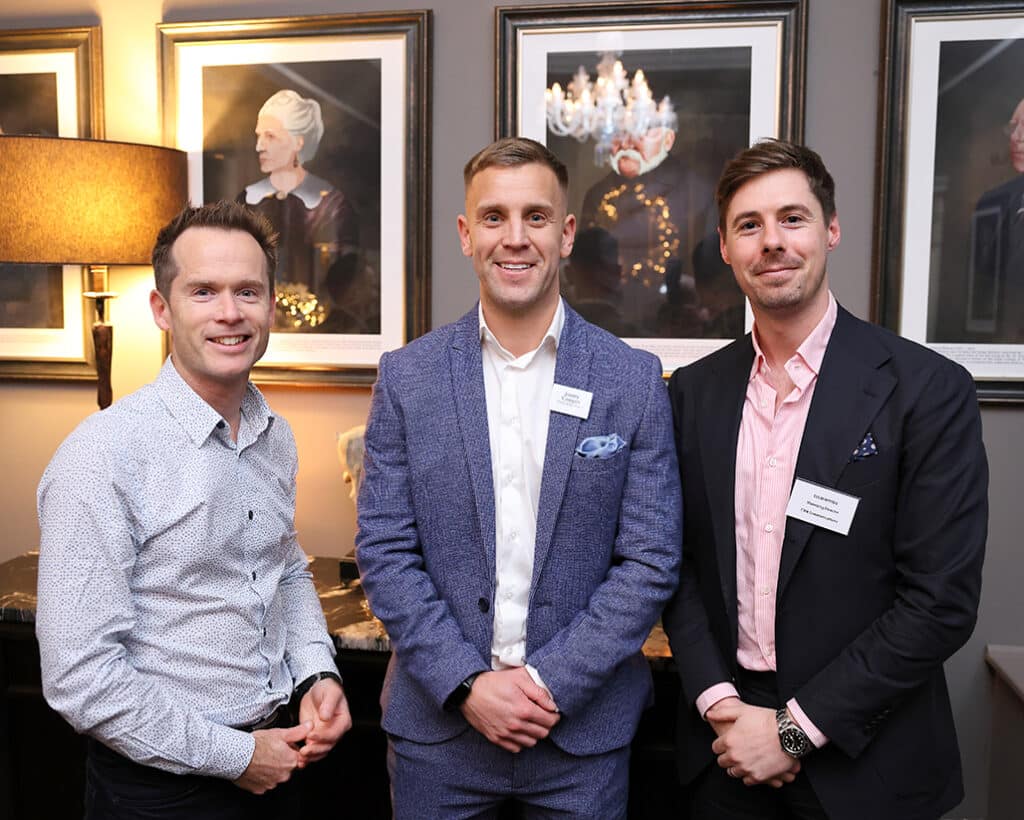
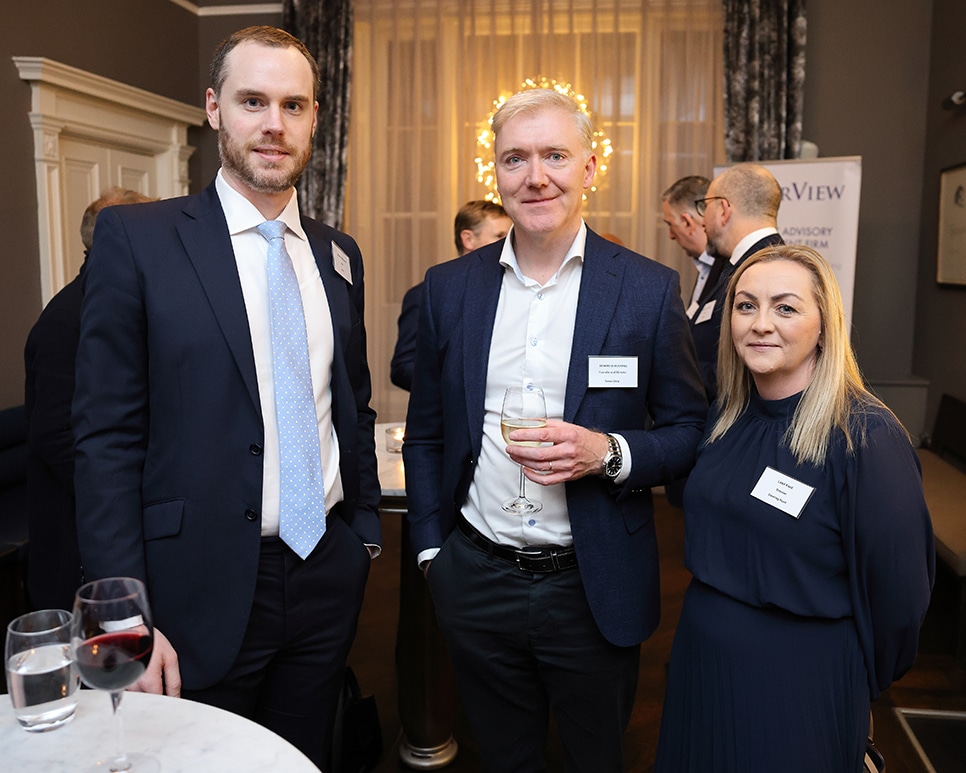
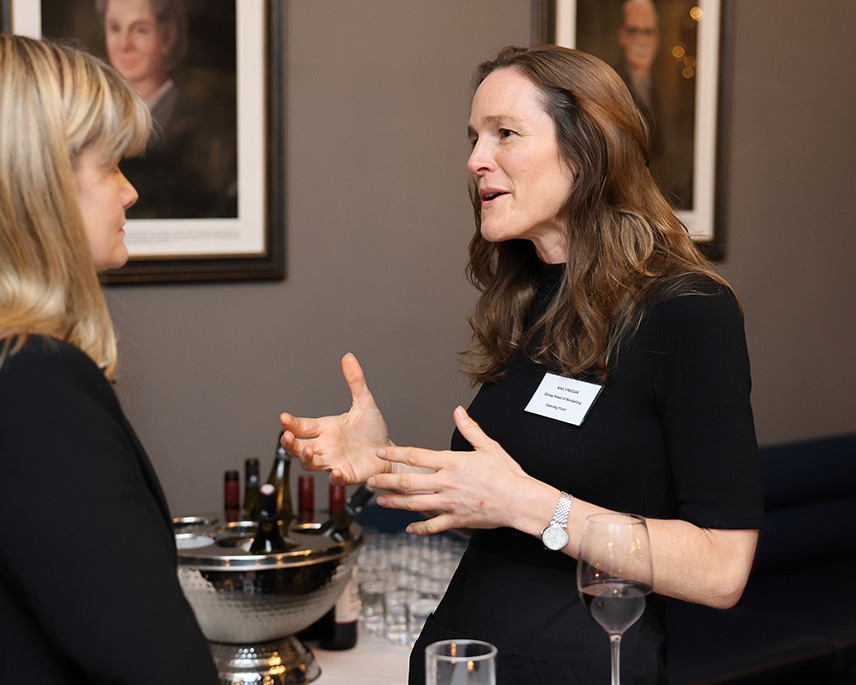




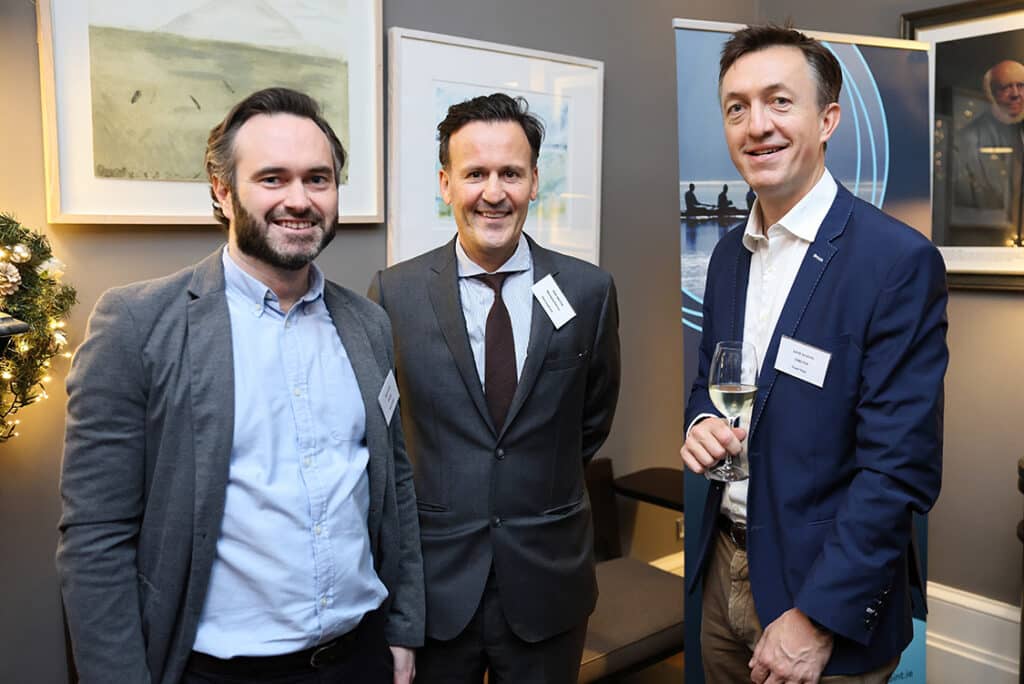
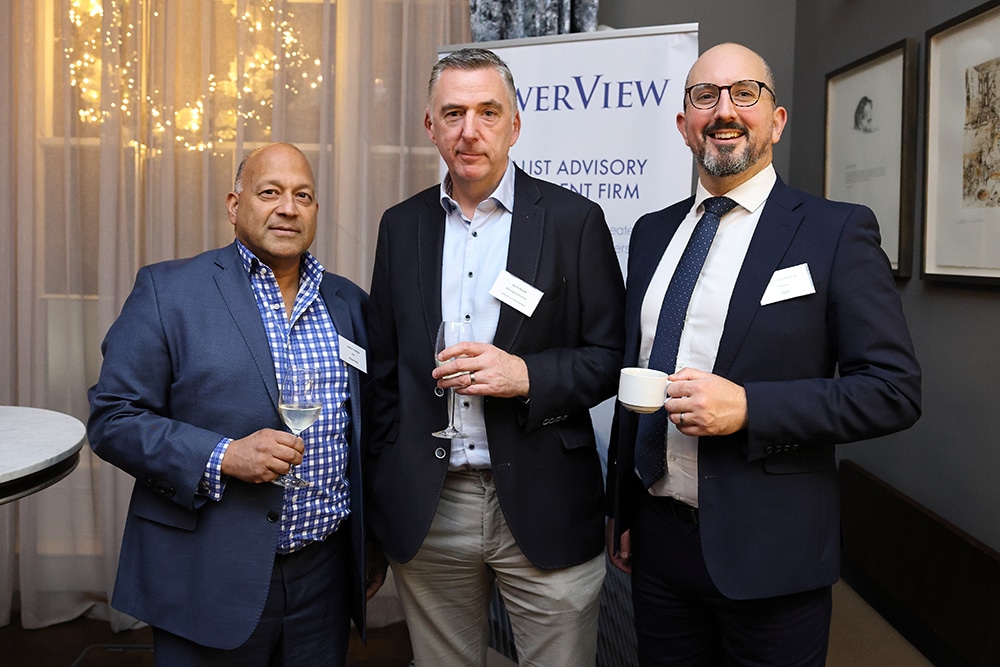

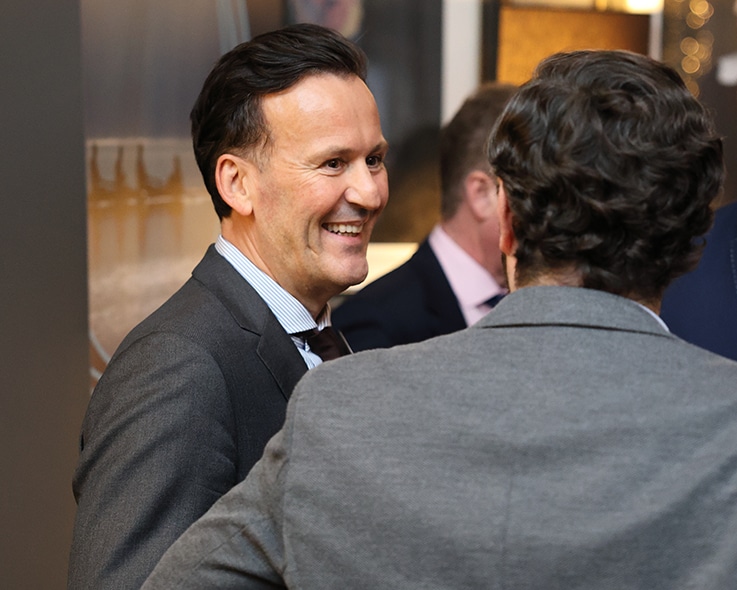
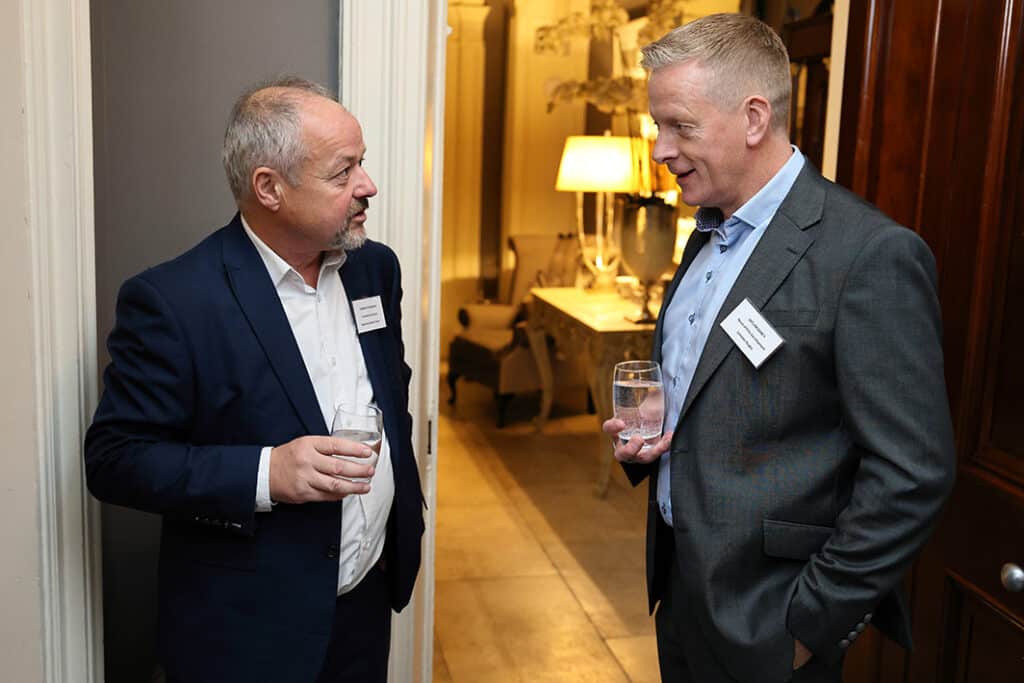

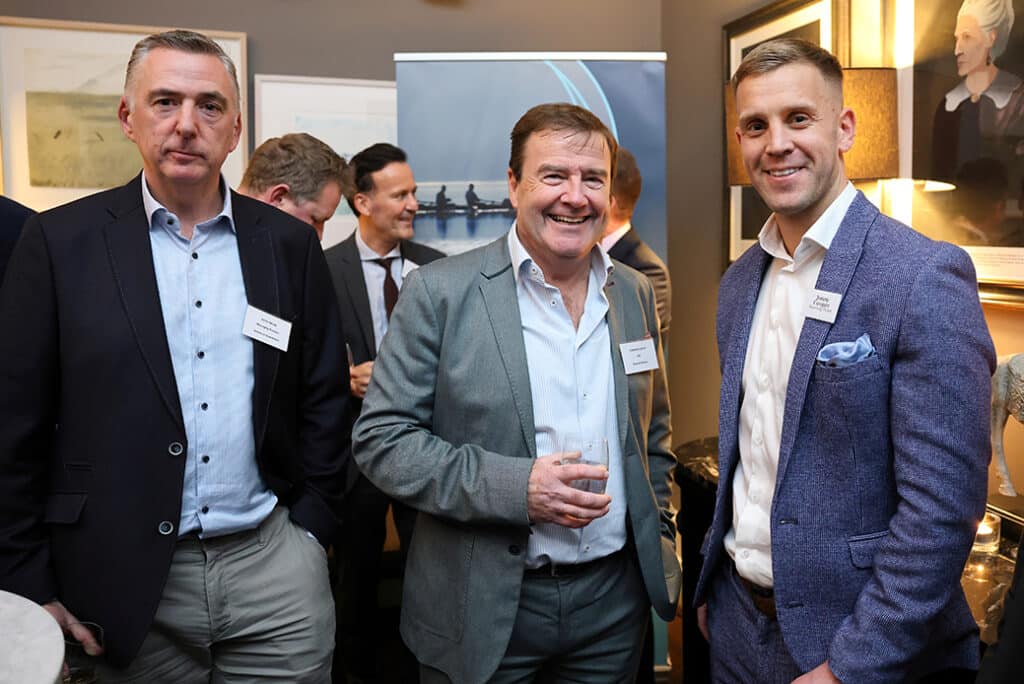
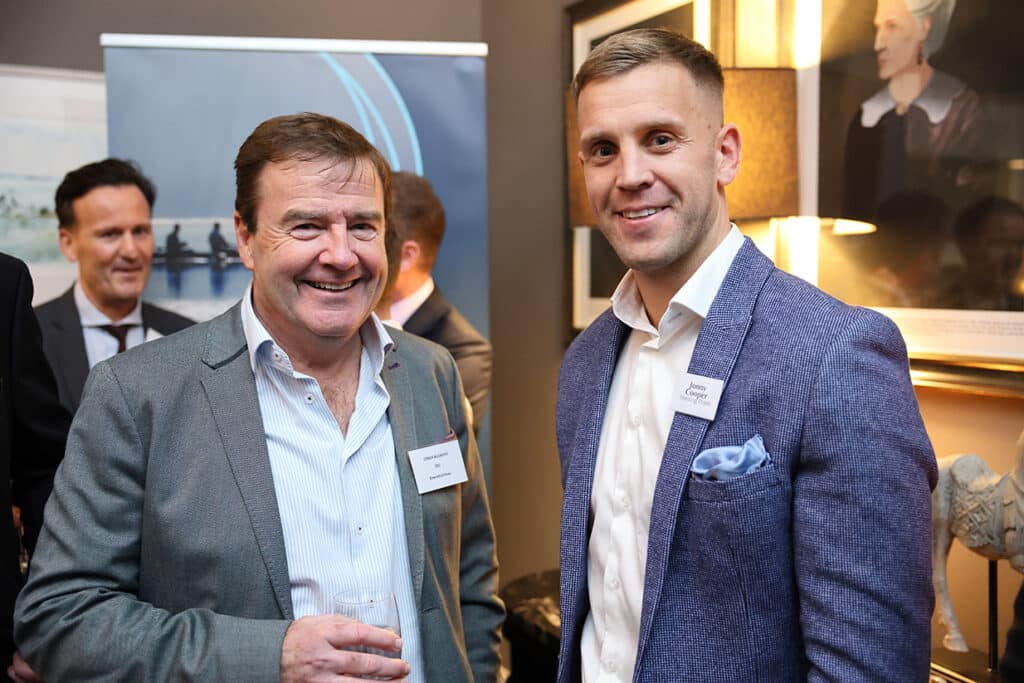


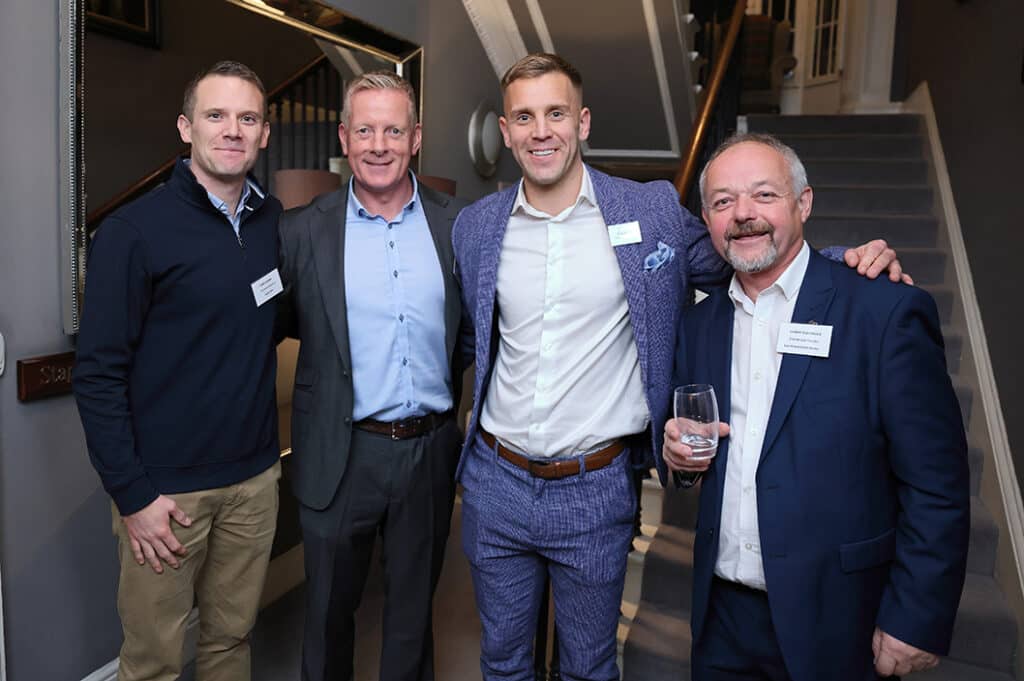

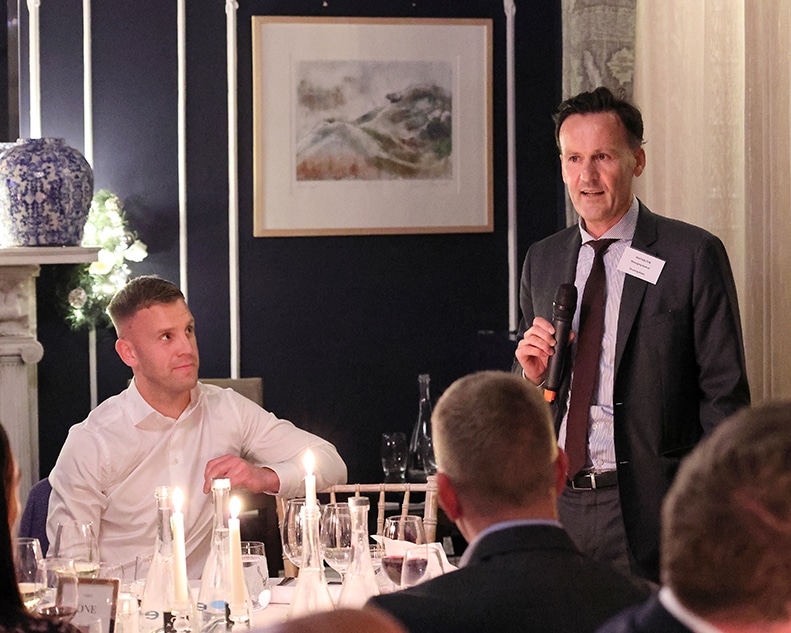

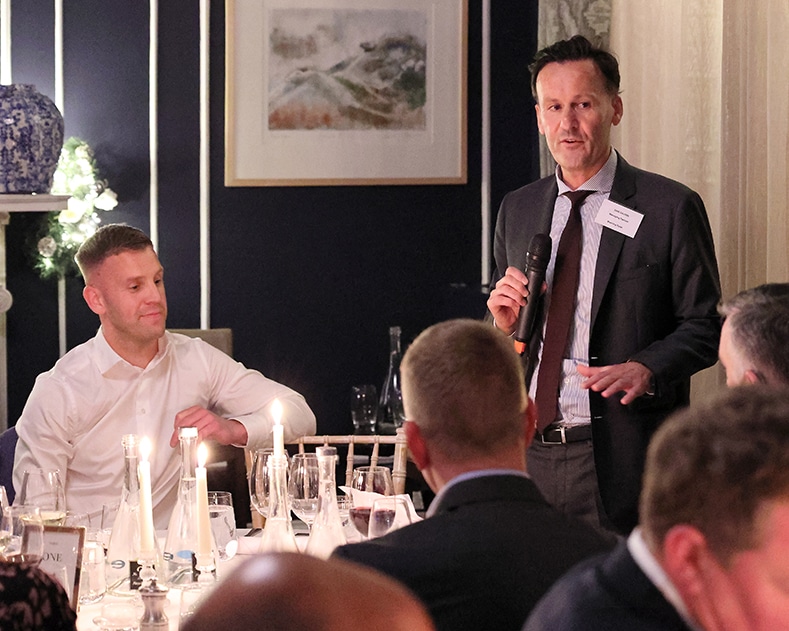
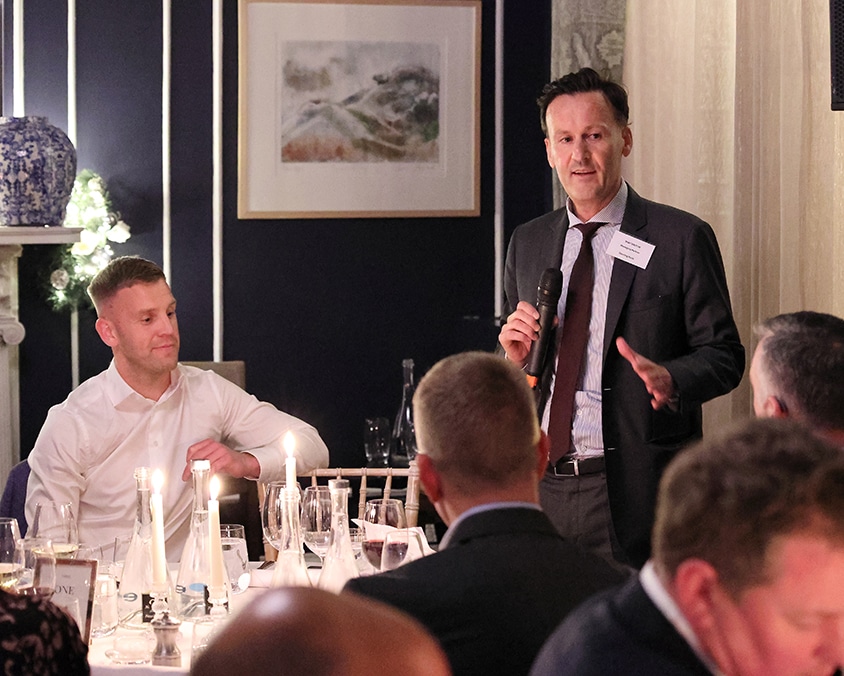
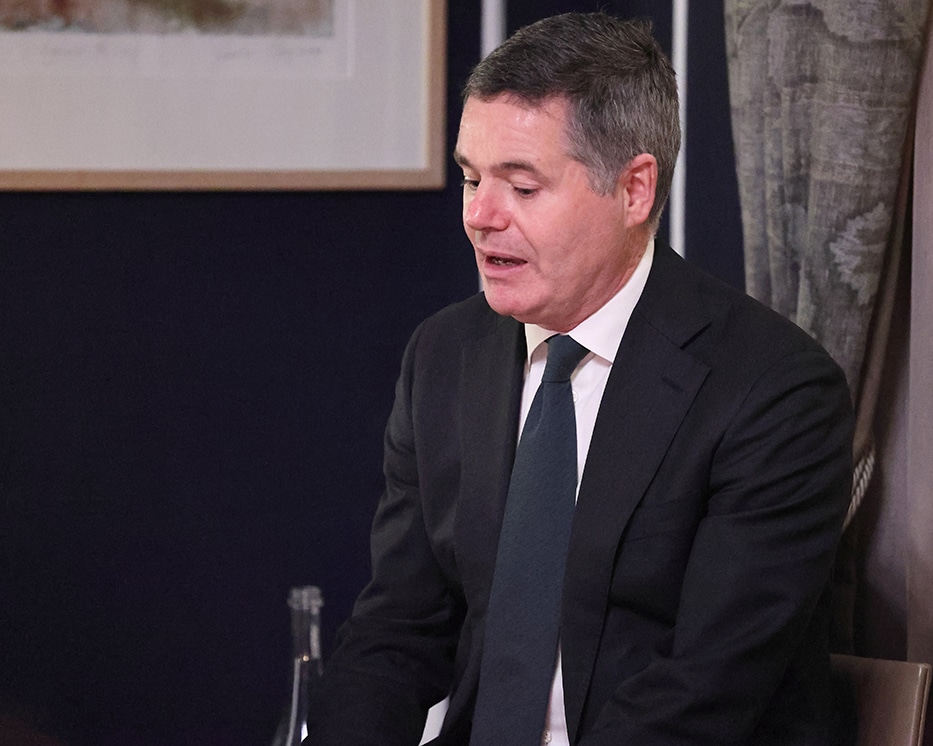

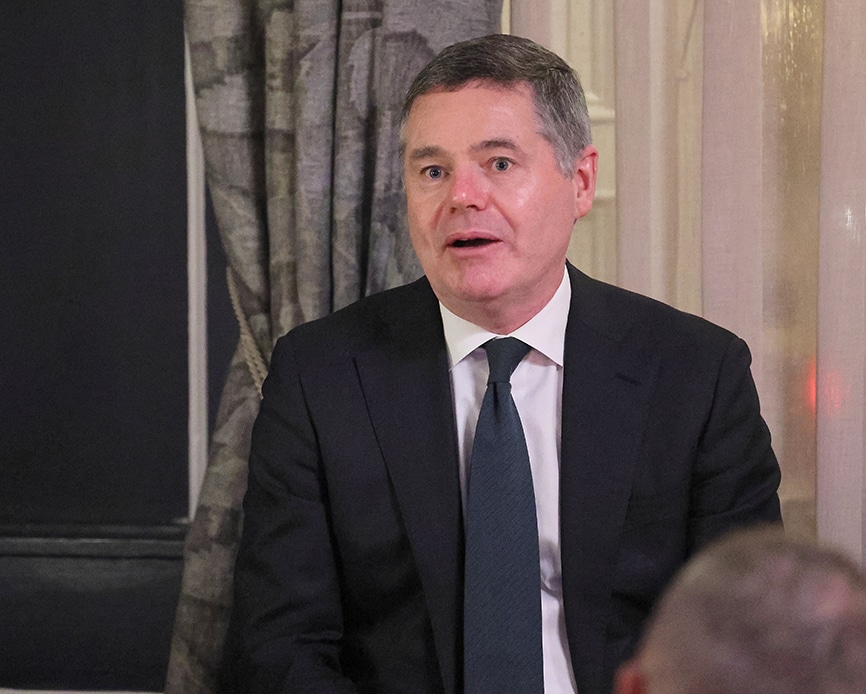
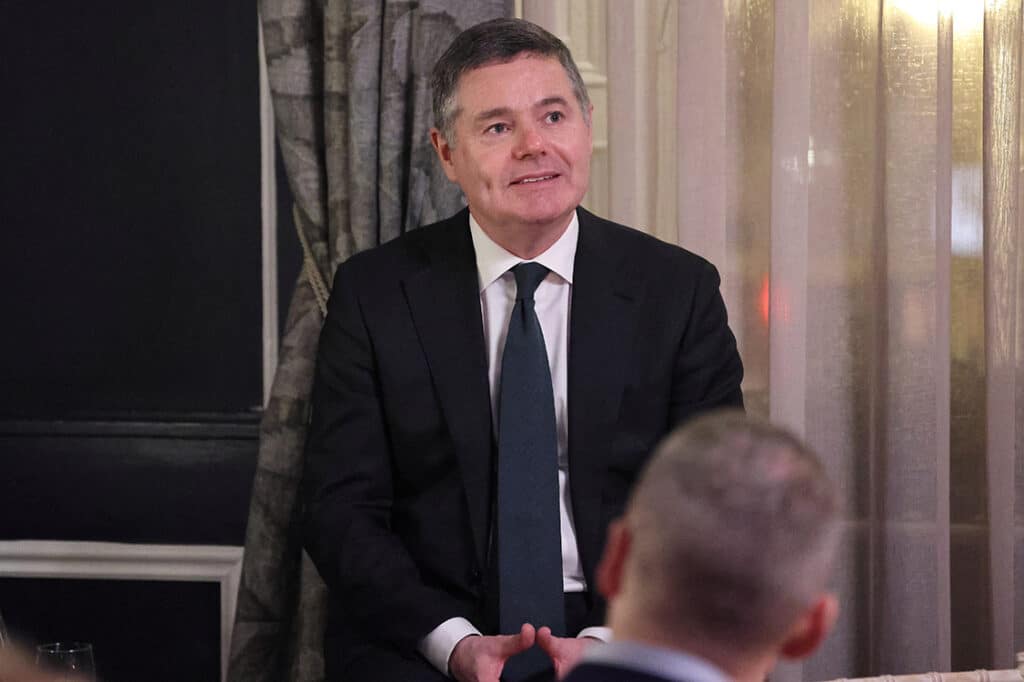



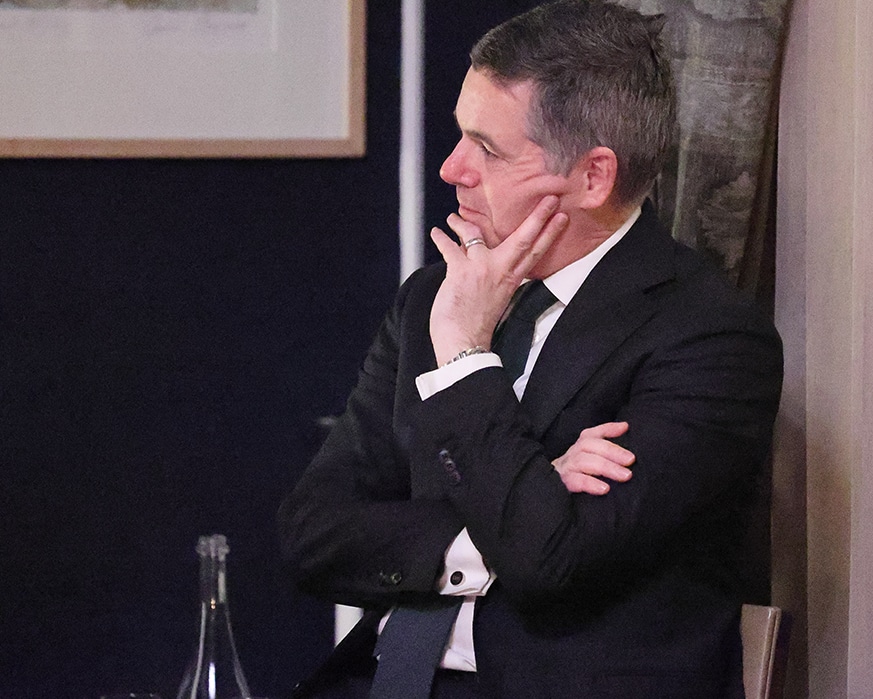
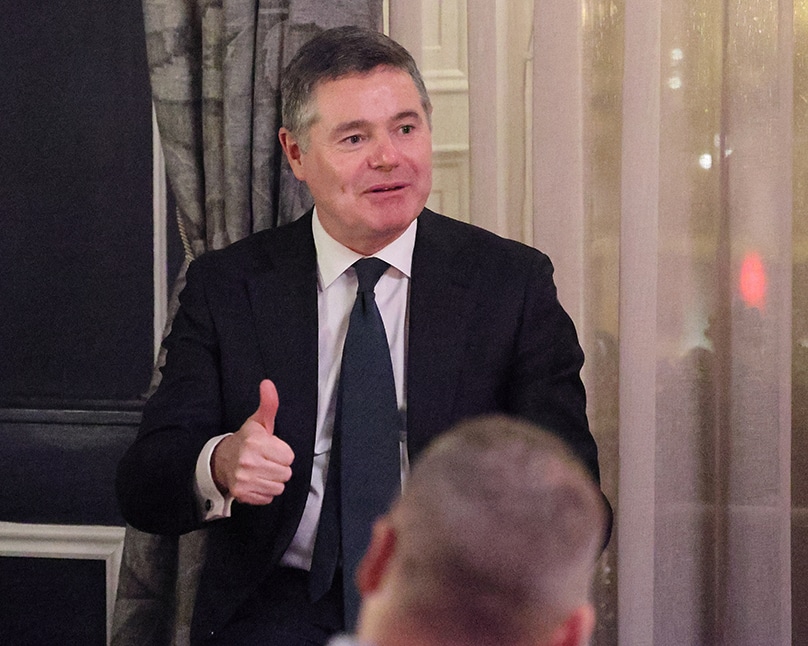

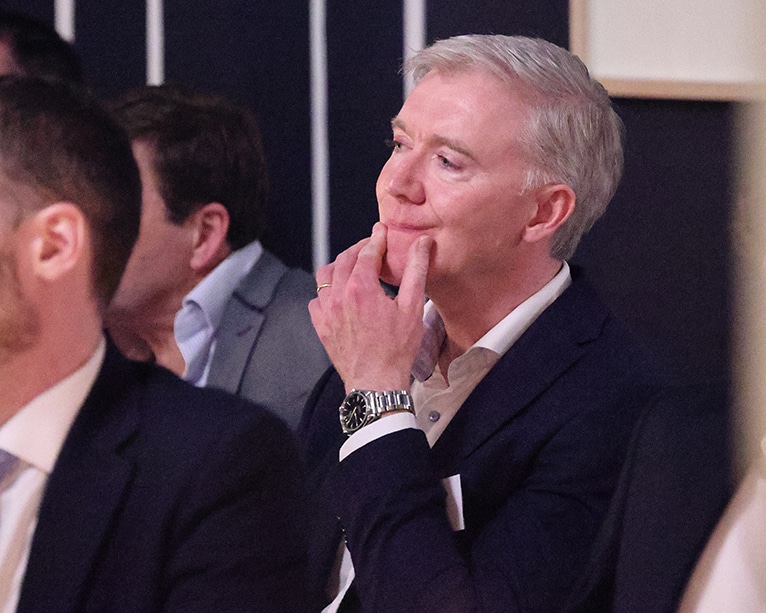
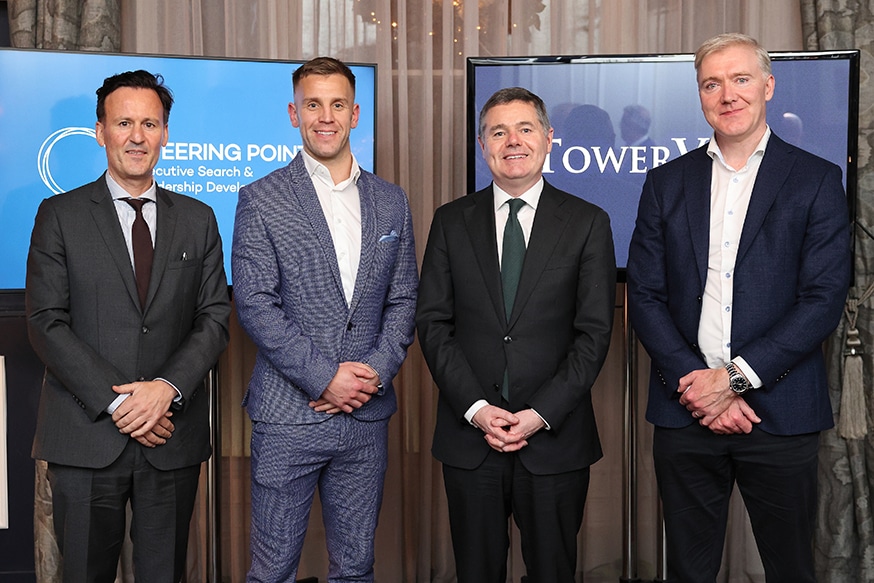
For media inquiries or to request high resolution photography from the evening contact Steering Point Group Head of Marketing Gail Finegan, gfinegan@steeringpoint.ie.

Introduction
Sometimes, even the most passionate and dedicated individuals can experience a dip in motivation and passion for their work or career. If you find yourself in this situation, you’re not alone. The good news is that there are ways to rekindle your passion and reignite your drive to excel. In this post, we’ll explore some psychological theories of motivation and social psychology concepts that can provide practical advice for reigniting the spark in your professional life.
Self-Determination Theory
First, let’s delve into the psychological theories of motivation. One such theory is the Self-Determination Theory (SDT) by Deci and Ryan (1985), which focuses on the concepts of autonomy, competence, and relatedness. According to SDT, people are more likely to be motivated when they feel a sense of control over their actions, believe they can succeed, and feel connected to others. To apply this theory to your work life, consider seeking opportunities for autonomy, setting achievable goals, and fostering positive relationships with colleagues.
Maslow’s Hierarchy of Needs
Another relevant psychological theory is Maslow’s Hierarchy of Needs (1943), which posits that people are motivated by fulfilling their basic needs before moving on to higher-order needs, such as self-esteem and self-actualisation. To rekindle your passion, examine whether your basic needs are being met at work, such as having a safe environment, job security, and social connections. If not, address these areas first to create a solid foundation for reigniting your passion.
Social identity theory
Turning to social psychology, the concept of social identity theory (Tajfel & Turner, 1986) suggests that individuals derive a sense of self-worth and belonging from their group memberships. In the context of work, identifying with your organisation or team can contribute to increased motivation and passion. To foster this sense of belonging, engage in team-building activities, share your organisation’s mission and values, and celebrate your team’s achievements.
Reigniting your passion
Now that we’ve explored some relevant theories let’s discuss practical tips for reigniting your passion at work:
- Reflect on your “why”: Revisit the reasons you initially chose your career or job, and remind yourself of what ignited your passion in the first place. This exercise can help you rediscover your purpose and motivation.
- Seek new challenges: Taking on new responsibilities or learning new skills can reignite your passion by pushing you out of your comfort zone and reigniting your curiosity.
- Connect with inspiring individuals: Surrounding yourself with passionate and motivated people can be contagious. Seek out colleagues, mentors, or role models who inspire and challenge you.
- Set SMART goals: Establish Specific, Measurable, Achievable, Relevant, and Time-bound goals that align with your values and interests, and celebrate your progress along the way.
- Practice self-care: Prioritise your mental and physical well-being by setting boundaries, managing stress, and engaging in activities that bring you joy.
- Cultivate gratitude: Regularly reflecting on your accomplishments and expressing gratitude for your job can help shift your focus from negative aspects to positive aspects of your work.
Conclusion
In conclusion, reigniting your passion for work or your career requires a combination of understanding the underlying psychological and social factors and implementing practical strategies. By drawing on the theories of motivation and social psychology, you can create a more fulfilling and passionate work life that drives you to excel.
More on Motivation
The Workplace Motivation Theory That Works
Organisational Psychology and Motivation
Emotional Intelligence and Engaging Others
References
Deci, E. L., & Ryan, R. M. (2000). The “what” and “why” of goal pursuits: Human needs and the self-determination of behaviour. Psychological Inquiry, 11(4), 227-268.
Dweck, C. S. (2008). Mindset: The new psychology of success. Random House Digital, Inc.
Maslow, A. H. (1943). A theory of human motivation. Psychological Review, 50(4), 370-396.
Pink, D. H. (2009). Drive: The surprising truth about what motivates us. Riverhead Books.
Seligman, M. E. P. (2002). Authentic happiness: Using the new positive psychology to realise your potential for lasting fulfilment. Free Press.
Tajfel, H., & Turner, J. C. (1979). An integrative theory of intergroup conflict. In W. G. Austin & S. Worchel (Eds.), The social psychology of intergroup relations (pp. 33-47). Brooks/Cole.
Vallerand, R. J., & Houlfort, N. (2003). Passion at work: Toward a new conceptualisation. In
S. W. Gilliland, D. D. Steiner, & D. P. Skarlicki (Eds.), Emerging perspectives on values in organisations (pp. 175-204). Information Age Publishing.

“Of all the things that can boost emotions, motivation, and perceptions during a workday, the single most important is making progress in meaningful work.” – Amabile and Kramer.
In their 2011 book “The Progress Principle”, Teresa M. Amabile, a Baker Foundation Professor at Harvard Business School, and Steven Kramer, PhD, Professor Emeritus in the School of Speech, Language and Hearing Sciences at San Diego State University, explain how seemingly mundane workday events can make or break employees’ inner work lives.
It’s a pivotal look at how meaning, achievement, happiness and success owe everything to the notion of everyday progress. Most especially it shows how managers can leverage progress to boost motivation and how celebrating small wins sets us up for further success in the future.
Progress and the inner life
Amabile and Kramer posit that “it’s forward momentum in meaningful work-progress that creates the best inner work lives” [1]. They suggest that while the subject of work motivation has been studied and commented upon extensively many times in the past, managers often fail to give it its due prominence in practice. In a survey asking about the keys to motivating workers, they found that “very few of our surveyed managers ranked progress first.”
Their research process included rigorous analysis of nearly 12,000 diary entries provided by 238 employees in seven companies over four months. These employees took a daily survey that sought to assess their emotions, moods, motivation levels and perceptions of work that day, as well as noting what they did and any events that stood out.
The results were striking, and resulted in Amabile and Kramer coining the concept of the “progress principle.”
“When we compared our research participants’ best and worst days (based on their overall mood, specific emotions, and motivation levels),” they write, “we found that the most common event triggering a “best day” was any progress in the work by the individual or the team. The most common event triggering a “worst day” was a setback” [2].
In terms of numbers, work progress of some kind occurred on 76% of people’s best-mood days, with set-backs occuring on just 13%. While setbacks occurred on 67% of people’s worst-mood days, and progress on just 25% of them.
Surmising, they write that, “If a person is motivated and happy at the end of the workday, it’s a good bet that he or she made some progress. If the person drags out of the office disengaged and joyless, a setback is most likely to blame” [3].
Progress affected every aspect of employees’ inner work lives. On days when they made progress, participants reported more positive emotions, became more intrinsically motivated and experienced more positive perceptions, i.e. seeing challenges as something exciting to be overcome rather than something frustrating that was holding them back.
The reverse proved true as well. On setback days, mood suffered, with feelings of fear, frustration and sadness rife. Motivation slumped and their perception of events skewed significantly more to the negative, both in how they viewed the work itself and also those around them.
The necessity of meaning
Progress, then, is key. But it must be progress that matters. That doesn’t mean the definition of progress must be limited – only applying to some seismic breakthrough, a rare, nigh impossible feat miraculously overcome. It simply means that it must be more than just progress for progress’ sake in a field that ultimately achieves little or nothing.
An example they give is washing pots in a kitchen or checking coats at a museum. Though progress is tangible – one more pot washed, one more coat checked – it feels purposeless on any grander scale and may not provide any deeper satisfaction despite the employee having worked hard. “The likely cause [of this dissatisfaction],” they write, “is your perception of the completed tasks as peripheral or irrelevant. For the progress principle to operate, the work must be meaningful to the person doing it” [4].
They cite how in 1983, when trying to entice John Sculley to leave PepsiCo to become Apple’s new CEO, Steve Jobs reportedly asked him, “Do you want to spend the rest of your life selling sugared water or do you want a chance to change the world?”
Meaning matters. John Sculley wanted it, pursued it, and the rest is history.
Becoming CEO of Apple is obviously a high-end example, but there are all sorts of roles in which we can find meaning, so long as the work matters to us. What brings about that feeling will change person to person – some will derive satisfaction from writing a line of code that helps streamline a process, others from making a good presentation that helps entice new clients, others from being kind and personable behind the shop counter ensuring customers keep coming back. What you’re doing matters less than how it makes you feel.
Celebrate good times, come on
We derive satisfaction from progress, from making breakthroughs big and small. As already noted, they boost our mood, motivation and perceptions. As Amabile and Kramer note, “Many of the progress events our research participants reported represented only minor steps forward. Yet they often evoked outsize positive reactions.” 28% of incidents that only had a minor impact on the project at hand were found to have a major impact on people’s feelings about it.
On the other side, small losses or setbacks were also found to have an outsized negative impact. In fact, “our study and research by others show that negative events can have a more powerful impact than positive ones. Consequently, it is especially important for managers to minimise daily hassles” [5].
One way managers can ensure positive progress is felt and maximised is to celebrate small wins.
Writing in Forbes, Whitney A. White, CEO & founder of Afara Global, writes that when starting a new business or taking on a new project, “It can be tempting to focus on a big, shiny end result instead of the smaller steps along the way. While holding a great vision can be helpful when going into a new venture, it can also distract from the important victories you need to maintain momentum” [6].
White suggests tracking small victories, taking time to celebrate them, even if it’s just ten or fifteen minutes, and using this positivity to feed future momentum.
Also writing in Forbes, Jody Michael, CEO of executive coaching firm Jody Michael Assoc., points out that she often encounters superstition when it comes to celebrating small wins.
“People don’t want to get too excited about an accomplishment,” she says, “because they don’t want to end up disappointed in the end. They don’t embrace the wins for fear that a loss is coming” [7].
This is the wrong approach. Yes, losses are coming. No matter what you do, how much you plan and how hard you work, something bad will happen; that’s life. Repressing positivity as a preparatory measure for the inevitable equal and opposite reaction that’s surely coming does not keep negative events at bay. So celebrate the positive moments while they’re here. Your spirits will be dampened by the bad times, so make sure they’re lifted by the good ones.
Michael continues, “a belief system that dampens the opportunities to celebrate wins and over-indexes on the losses isn’t a great strategy for your physiology or for your psychology” [8].
From a managerial standpoint, celebrating the small wins is a simple and crucial way to aid employee satisfaction and motivation. A study by the enterprise collaboration web app Socialcast found that, “69% of employees would work harder if they felt their efforts were better appreciated” [9].
Celebrating small wins fosters a positive work environment, builds momentum and helps improve your employees’ inner work life, which, as we’ve already noted, is pivotal to their performance.
Inner life management
Amabile and Kramer lay out their strategy for how managers can foster a work environment that enhances their employees’ inner work lives. They propose utilising what they term “catalysts” and “nourishers”.
They define catalysts as “actions that support work. They include setting clear goals, allowing autonomy, providing sufficient resources and time, helping with the work, openly learning from problems and successes, and allowing a free exchange of ideas. Their opposites, inhibitors, include failing to provide support and actively interfering with the work” [10].
They define nourishers as “acts of interpersonal support, such as respect and recognition, encouragement, emotional comfort, and opportunities for affiliation. Toxins, their opposites, include disrespect, discouragement, disregard for emotions, and interpersonal conflict” [11].
They note that while their proposition is not radical – in fact, to many it may seem like Management 101 – their studies show that many managers fall short of even these basics.
It would be easy to read that and think, “well, sure, but not me, or not any other decent managers.” And maybe not. But it’s worth giving it further consideration. Just because most managers know what they should be doing doesn’t mean they are doing it.
Think of it like any other aspect of your lifestyle. You may know that your mental and physical health is better when you eat healthily every meal and exercise everyday. Does that mean you never slip up? You may know that you gain little and feel bad about yourself after a prolonged period scrolling your phone, but next time you’re bored on the sofa, what do you think you’ll find yourself doing?
Management is no different. Just because you know you should be encouraging, open, attentive, patient and generous doesn’t mean there aren’t times you fall short. How we are on our worst day says a lot more about our character than who we are on our best. So basic as it may seem, try to pay active attention going forward, self-assess. Ask yourself, “am I actually enacting all the positive management traits I know and believe in? Am I practising what I preach? If not, can I start now?”
Small wins, big progress
The progress principle measures how our inner work life, consisting of our mood, motivation and perception, are affected by the progress we’re making. Even small progress has a drastic impact. That impact can be maximised by celebrating every win, no matter how small. A lot of that responsibility falls to managers. It is their job to foster a work environment that allows for progress and duly celebrates it, leading to a happier, more motivated and productive workforce. Understanding it is easy. Putting it into practice requires one to self-reflect and actively work to enhance the inner lives of their employees.
More on Purpose
Professional Meaning: Why it’s Important and How to Find it
Creating and fostering cultures of meaning
Crafting: How to Increase Engagement, Performance, and Job Satisfaction
References
[1] https://hbr.org/2011/05/the-power-of-small-wins
[2] https://hbr.org/2011/05/the-power-of-small-wins
[3] https://hbr.org/2011/05/the-power-of-small-wins
[4] https://hbr.org/2011/05/the-power-of-small-wins
[5] https://hbr.org/2011/05/the-power-of-small-wins
[10] https://hbr.org/2011/05/the-power-of-small-wins
[11] https://hbr.org/2011/05/the-power-of-small-wins

“The most powerful person in the world is the storyteller.” – Steve Jobs
Stories are powerful. They’ve been pivotal to human development and understanding since the days of hunter-gatherers congregated around the fire. They are our means of connection and often our route of escape. We are a subjective species constantly trying and failing to make sense of the objective world around us. As such, we are nothing more than the story we tell ourselves.
In the realm of business, harnessing the narrative force of storytelling has become a pivotal element in crafting compelling brands that resonate deeply with audiences.
In today’s competitive market, where products and services often compete in parity, the difference between success and obscurity often lies in the ability to captivate, engage, and emotionally connect with consumers. Storytelling in branding serves as a potent vehicle, enabling companies to transcend the mere transactional exchange and establish a profound, enduring relationship with their audience.
Building a brand story
A brand story should be more than just a list of key milestones and achievements. It should represent who a company is, making clear not just what they do but why and how.
Too often, brands fail to encapsulate themselves in their story. They get too technical, alienating the average consumer, or too vague, seeking to build a broad church but failing to articulate what it is that makes them different. It’s a difficult balance to strike, but get it right and you will engage your audience like never before.
Engaging on an emotional level
At the core of effective storytelling in branding lies the ability to evoke emotions. Emotions shape perceptions, drive decisions, and create lasting impressions. A well-crafted brand story has the potential to evoke empathy, joy, nostalgia, or even a sense of aspiration within consumers, fostering a deep emotional connection with the brand.
Consider iconic brands like Nike, whose narrative isn’t just about shoes and sportswear but about the human spirit, determination, and overcoming adversity. Their “Just Do It” campaign resonates with consumers on a personal level, motivating them beyond mere athletic gear and positioning Nike as a symbol of empowerment.
To see the full power of storytelling in effect, look no further than Save the Children. As Khushboo Nangalia notes in her TedTalk “The Undeniable Power of Business Storytelling,” [1] when trying to raise funds for children suffering in Africa, Save the Children put out two advertisements. The first featured statistics documenting the horrifying conditions many children were forced to contend with in their daily lives. The second also noted the magnitude of the problem but honed in on a specific example, telling a “day in the life” story of Rokia, an eight-year-old girl in Mali suffering from serial hunger. The audience exposed the second advertisement donated double that of the first.
It’s not surprising. The late Roger Ebert, a leading US film critic, famously referred to cinema as an “empathy machine”. This description is applicable to all storytelling. Stories are a way of seeing the world through another’s eyes, of filtering our own lived experience through theirs. This is true not just metaphorically but scientifically.
Uri Hasson, professor of Psychology and Neuroscience at Princeton University, found that our brains respond to stories in the same way regardless not just of who we are but how we hear them [2].
Hasson and his colleagues had study participants lie in an fMRI scanner while watching episodes of the BBC series Sherlock and Merlin while the machine measured their cognitive activity. They then recounted the story as a recording. This recording was then listened to by another set of participants whose cognitive activity was also being monitored. Hasson found that the brain patterns of the participants watching the story and those hearing it recounted were aligned throughout, even though watching a clip and imagining it from someone else’s description are two very different things.
In another experiment, Russian speakers and English speakers listened to the exact same story told in their respective languages, and brain activity still aligned [3]. Stories connect us. Hasson concluded that communication was really “a single act performed by two brains” [4]. A speaker’s brain generates a sound wave and that sound wave then influences the brain response in a listener, bringing the two brains into alignment. It’s a dance; one brain’s steps move in rhythm with another’s to form something complete.
Melanie Green, a professor of Communication at the University of Buffalo, found something similar. According to her study, people are more likely to make changes to their lifestyle and health habits if they see a character they relate to make the same change [5].
Meanwhile, psychologist Jerome Bruner says that facts are twenty times more likely to be remembered if they’re part of a story [6].
Building authenticity and trust
Authenticity is the bedrock of effective storytelling. Consumers are increasingly drawn to brands that showcase transparency and authenticity in their narratives. A compelling brand story, rooted in authenticity, builds trust and credibility, fostering a sense of loyalty among consumers.
Too often brands are afraid to be truly authentic because it means showing fallibility. Instead, their message gets lost in a milieu of jargon and hyperbole. Companies are trying to sell themselves and as such go too far. Desperate to stand out from the competition, they oversell and end up falling back on meaningless corporatespeak or Edenic overpromises.
When interviewed by Harvard Business Review, Robert McKee, author of Story: Substance, Structure, Style, and the Principles of Screenwriting, held up by many in Hollywood as the bible of storytelling, was asked what was wrong with companies who paint too positive a picture.
“It doesn’t ring true,” he responded. “You can send out a press release talking about increased sales and a bright future, but your audience knows it’s never that easy. They know you’re not spotless; they know your competitor doesn’t wear a black hat. They know you’ve slanted your statement to make your company look good. Positive, hypothetical pictures and boilerplate press releases actually work against you because they foment distrust among the people you’re trying to convince” [7].
By all means sell your brand – who you are, what you stand for, why it matters, why you’re different – but do so honestly. Otherwise, you risk losing credibility.
Take the outdoor clothing company Patagonia, for example. Patagonia often draws attention to its commitment to environmental sustainability and ethical business practices in its storytelling. But it’s able to do so because it can back its words up in action. In 2022 the company’s owner and his family transferred their ownership of Patagonia, valued at about $3 billion, to a specially designed trust and a nonprofit organization fighting climate change [8].
We accept the story because it’s authentic. Not every company will be able to tell a similar story to Patagonia (if only they could), but every company can be honest about what they stand for and how they put those values into practice each and every day. And in the era of mass corporate scrutiny, you can bet those brands that make disingenuous claims about their values will be rooted out quickly.
Tips for creating a good brand story
All stories follow a pattern. Beginning, middle, end; three-act structure; whatever you want to call it. The key thing is to build a narrative and take your audience on a journey. That doesn’t mean boring them with a chronological explanation of how you got where you are. Stories trade on emotion, so make your story personal, something that connects.
There’s no one formula to it. If you’re the company founder you can tell your own story (provided it’s relevant) – why this means so much to you, the gap in the market you’re filling, and why it’s so vital. Perhaps if your product is seeking to help people you can give a customer story depicting life before and after your product. Either way, make it relatable. Your audience is not an amorphous single entity, it is a collection of people who understand what it is like in the real world. They’ve all struggled. They’ve all failed. Just as you have. Don’t be afraid to let them know that.
A lot of the variables will depend on who you’re speaking to. It’s vital that you know your audience. Who are they? What drives them? What is your best point of connection? Once you know all that, you can define your core messaging around it. Writing in Forbes, Candice Georgiadis, social media influencer and founder of Digital Day Inc, a social media and marketing agency in California, suggests a useful way to frame your message is to make sure you’re explaining how: your brand helps your audience to solve their problem with your solution [9].
Once you understand your audience and have decided on your messaging, you need to decide the best channel for your story. In the modern climate there are a variety of key methods, be it video, text, audio, social media, traditional media, etc. The best medium will be dependent on who you’re trying to reach and what you’re trying to say. Alter your message according to the medium – a message designed to be read in a broadsheet will obviously not work well on TikTok and vice versa.
Don’t be afraid of detail. Detail helps people relate. Audiences don’t love Spider-Man because he has a cool suit and swings from buildings (though it does help). They like him because he’s awkward, nerdy, kind-hearted, and – in spite of the superpowers – he reminds them of what they were like at that age. That means that when he does swing from buildings, it’s all the more easy for them to root for him. Give your audience reasons to root for you. Help them connect.
The power of story
Stories are the means by which we see the world. They are empathy machines that connect us to others. There is no narrative structure to life and yet we impart one on it all the same because we want stories. We want connection. We want to feel like we’re part of something bigger than ourselves. People don’t want numbers and they don’t want perfection. They want honesty and authenticity. Too often, though, they are denied it by brands that choose to over-indulge on technicalities – “in-baseball” brags that non-experts in their field couldn’t possibly understand – or that opt for vague, glossy sloganeering, trying so hard to appeal to everyone that they end up appealing to no one.
A better option is to eschew such approaches altogether. Instead, do the thing that humans have been doing day-to-day for century upon century: tell a good story. You might be surprised how well it turns out.
More on Brand Building
Neuromarketing and the Psychology of Branding with Matt Johnson
Building Influential Brands That Connect with Tessa Misiaszek
References
[1] https://www.youtube.com/watch?v=CabbUUrjFck
[2] https://paw.princeton.edu/article/clicking-how-our-brains-are-sync
[3] https://blog.ted.com/what-happens-in-the-brain-when-we-hear-stories-uri-hasson-at-ted2016/
[4] https://paw.princeton.edu/article/clicking-how-our-brains-are-sync
[5] https://www.youtube.com/watch?v=WKIZ0bicfFw
[6] https://www.harvardbusiness.org/what-makes-storytelling-so-effective-for-learning/
[7] https://hbr.org/2003/06/storytelling-that-moves-people
[8] https://www.nytimes.com/2022/09/14/climate/patagonia-climate-philanthropy-chouinard.html

Introduction
Red teaming refers to critically examining plans, policies, systems, and assumptions by taking an adversarial stance. This approach, which can be implemented by either an internal team or an external group, aims to emulate an outsider’s perspective. Its primary objective is to counteract cognitive biases like groupthink and confirmation bias, often hindering effective decision-making and critical thinking within individuals or organisations.
Red teaming, which is deeply rooted in military strategy and cybersecurity, has evolved into a formidable tool for enhancing decision-making in business and personal spheres. It involves adopting an adversarial stance to examine plans, strategies, and assumptions critically. By viewing challenges through the lens of a potential competitor, red teaming encourages a deeper level of critical analysis, which is crucial for robust decision-making. In an era of complex challenges and swift changes, the ability to foresee and counteract potential threats proves invaluable. Red teaming exposes vulnerabilities and uncovers opportunities for innovative solutions and strategic foresight. This proactive approach goes beyond finding faults; it enables more informed, resilient, and effective decisions in our dynamic world.
Implementing Red Teaming in Decision-Making Processes
To implement red teaming in business or personal settings, one must understand the necessary steps and be aware of potential challenges and their solutions.
Steps to Incorporate Red Teaming:
1. Define Objectives: Articulate your goals with red teaming clearly. In business, this may involve refining a product launch strategy; in personal life, it could mean choosing the most suitable educational path.
2. Assemble a Diverse Team: Bring together individuals with different perspectives and expertise. Diversity in thought and experience is essential for effective red teaming.
3. Simulate Adversarial Scenarios: Motivate the team to think like opponents. Red teaming includes questioning assumptions, pinpointing potential weaknesses, and proposing alternative strategies.
4. Constructive Feedback Loop: Establish an environment where the team values and acts upon feedback. Regularly review the outcomes of red teaming exercises and adjust as necessary.
Red Teaming in Various Contexts
Cybersecurity: In cybersecurity, red teams play an essential role. Comprising ethical hackers, these teams carry out simulated cyber-attacks to uncover and tackle vulnerabilities within an organisation’s network. For example, a red team might initiate a controlled phishing campaign to assess employees’ awareness and the company’s email security protocols. Red teams bolster the organisation’s overall security posture by identifying and addressing these weaknesses before actual attackers do. This proactive approach strengthens defences and nurtures a culture of continual vigilance and improvement.
Military Strategy: Red teaming entails assembling a group to act as a potential adversary to test and evaluate military tactics and strategies. An illustrative example is using red teams in war games, challenging existing plans and exposing potential weaknesses in defence strategies. Employing red teaming strategies ensures that military operations remain resilient to unexpected challenges and adaptable to evolving threats.
Business and Management: Red teaming is critical in refining strategies and decision-making processes in the business sector. A well-known corporation might employ a red team to contest the launch strategy of a new product. The team might unveil overlooked market dynamics or potential consumer reactions by taking on the competitor’s role, leading to a more comprehensive and robust market entry strategy. Such critical evaluation prevents costly mistakes and encourages innovative thinking.
Critical Thinking Exercise: Beyond these sectors, red teaming is an invaluable, helpful thinking exercise in personal decision-making. Whether appraising career moves, investments, or daily choices, applying a red team mindset involves actively seeking potential pitfalls and alternative outcomes. This methodology propels individuals out of their comfort zones to question their assumptions and ultimately make more considered and balanced decisions.
Challenges and Solutions:
• Resistance to Criticism: Overcome the natural resistance to criticism by fostering a culture that values constructive feedback as a means for improvement.
• Groupthink: Counter groupthink by encouraging independent thought and ensuring the team hears all voices, regardless of hierarchy or role.
• Balancing Pessimism and Realism: While red teaming can lead to pessimism, it’s crucial to maintain a balance between identifying potential problems and keeping a realistic perspective.
By integrating these steps and addressing the challenges, organisations and individuals can use red teaming effectively to enhance their decision-making processes. The key lies in seeing red teaming not as a one-off exercise but as a continuous practice that evolves and adapts to various situations and objectives.
The Psychology Behind Red Teaming
Red teaming’s efficacy as a decision-making instrument stems from psychological principles addressing the cognitive biases that frequently influence human judgment. By incorporating adversarial thinking, decision-makers use red teaming to challenge these biases, promoting a balanced and thorough evaluation of strategies and assumptions.
Adversarial Thinking and Cognitive Psychology: The heart of red teaming lies in adversarial thinking, upheld by psychological theories that value multiple perspectives. Cognitive psychology suggests that considering an issue from diverse viewpoints yields a more rounded understanding. Dialectical thinking resonates with this approach, as it involves decision-makers weighing conflicting ideas to reach a comprehensive conclusion and actively seeking out and scrutinising alternative viewpoints.
Role of Cognitive Biases in Decision-Making: Research in judgment and decision-making identifies cognitive biases, such as anchoring and overconfidence, that can lead to inferior decisions, especially in negotiations. Acciarini et al. (2021) demonstrate how these biases, affected by both internal perceptions and external changes like digitalisation, significantly influence strategic decisions.
Overcoming Cognitive Biases through Red Teaming: Red teaming is a strategy to combat biases, cultivating an environment where scepticism and critique become essential. By adopting a perspective that contests the prevailing status quo, red teaming engenders a deeper analysis less susceptible to biases such as confirmation bias—where we favour information that corroborates our beliefs—and availability bias—where the most accessible knowledge disproportionately influences our judgment.
Comprehensive Decision-Making: Korteling and Toet (2020) offer a neuro-evolutionary explanation for these biases, attributing them to the design characteristics of our brains, honed to ensure survival in ancestral environments. Red teaming counters these innate tendencies by promoting critical evaluation and open-mindedness, leading to more informed, innovative, and resilient decisions.
This integration of insights provides a nuanced understanding of red teaming’s role in decision-making. It ensures that decisions are well-considered, multifaceted, and adaptable—essential in both business and personal realms. This psychological congruence renders red teaming invaluable for navigating complex decisions and challenges in today’s rapidly evolving world.
Real-Life Applications of Red Teaming
In Business: Google’s AI Red Team A compelling example of red teaming in business is Google’s application in AI system security. Google’s AI Red Team is a specialised unit that addresses complex challenges in a high-tech environment. This team’s primary function is to simulate various attacks on AI systems, from extracting training data to intricate tactics like backdooring AI models. By emulating these threats, the AI Red Team enables Google to predict and neutralise potential vulnerabilities in its AI systems.
This proactive stance has proved crucial in identifying and mitigating risks shaping the development of safer AI technologies. Google’s endeavour highlights the progressive nature of red teaming: from military and cybersecurity origins to a vital instrument in safeguarding AI innovations. The need for AI expertise to tackle AI-specific threats is one of the lessons from this red teaming experience, underscoring the flexibility and depth of red teaming methods in contemporary business contexts.
In Personal Life: Everyday Decision-Making Red teaming also applies to personal decision-making, acting as a critical analysis tool. Consider a family planning a holiday. They employ a red team strategy rather than selecting the most attractive destination. One member plays the ‘adversary’, raising issues like budget constraints, travel restrictions, or suitability for all ages. Adopting a red team approach, the family thoroughly assesses all options, considering factors they might have initially overlooked. The family ultimately decides on an option accommodating everyone’s preferences and practical needs, demonstrating how red teaming can transform routine decisions into well-considered choices.
These instances from business and personal life showcase the practicality and adaptability of red teaming. Whether ensuring the security of cutting-edge technology or making day-to-day life decisions, red teaming provides a systematic approach to problem-solving that is both effective and versatile.
Conclusion
Red teaming, as demonstrated, is a versatile and potent tool that significantly enhances decision-making in both business and personal contexts. It advocates for an adversarial perspective, revealing potential vulnerabilities and biases in strategies and assumptions. From Google’s pioneering use of red teaming in AI system security to its application in everyday life, this method has proved its worth in various scenarios. Red teaming ensures more robust and resilient decisions by nurturing critical thinking, challenging established viewpoints, and promoting a culture of meticulous evaluation. The imperative is clear: whether you’re at the helm of a business or steering through personal choices, integrating red teaming into your decision-making can bring considerable advantages. Adopt this approach to tackle complexities with greater assurance and foresight.
More on Decision-Making
Why You Should Delegate – And How To Do It Effectively
The Evolution of Great CEO Leadership
Stress Management and Leadership Through Mindfulness
References
Caputo, A. (2013). A literature review of cognitive biases in negotiation processes. International Journal of Conflict Management, 24(4), 374-398. https://doi.org/10.1108/IJCMA-09-2012-0074
Korteling, J. E., & Toet, A. (2020). Cognitive biases. In Encyclopedia of Behavioural Neuroscience. Elsevier. https://doi.org/10.1016/B978-0-12-809324-5.23685-X
Acciarini, C., Brunetta, F., & Boccardelli, P. (2021). Cognitive biases and decision-making strategies in times of change: A systematic literature
For an in-depth understanding of red teaming in AI, refer to Google’s AI Red Team article by Daniel Fabian, “Google’s AI Red Team: The Ethical Hackers Making AI Safer”, Google Blog, July 19, 2023.

Global Overview: The Tapestry of Interconnectedness
As we progress into the 21st century, we’re becoming more connected than ever, breaking down barriers between countries and industries. Our ability to adapt to digital changes and work together effectively shapes today’s success. It’s not just about your contacts but about how well you can network and team up with others.
Consider how digital advancements are transforming how we do business: Teams spread across the globe can work together seamlessly in real-time as though they were side by side, using platforms like Slack and Asana. With IoT technology, a farmer can enhance crop production by leveraging insights from data experts halfway around the world. What once seemed like scenarios from a sci-fi novel are now the foundations of today’s business world.
Some events have sounded a loud signal for the need to be even more connected. The recent global pandemic stands out in this regard. Businesses quickly adjusted and turned obstacles into openings for growth through collaboration powered by digital tools. Firms that had previously laid out digital strategies with a timeline of years had to accelerate their plans, implementing them within weeks or even days.
Contemporary Business Landscape: Collaboration as the New Competition
Today’s business scene puts a high value on cooperation, making it a driving force for innovation and growth. It’s become evident that bringing together various resources, expertise, and abilities is far more effective than individual efforts. The advantage now is with those who establish strategic partnerships, from start-ups to large tech firms.
We’re witnessing an increase in unlikely partnerships: auto manufacturers teaming up with software giants to pioneer self-driving cars and significant retailers working with tech start-ups to transform the shopping experience with AI. These partnerships are more than simple alliances; they represent a fusion of visions to create what they couldn’t on their own.
Digital platforms are at the core of this new wave of cooperation. They enable and accelerate partnerships, creating spaces where creative concepts become reality. Consider Alibaba’s rural Taobao initiative, which expands e-commerce to the farthest reaches, or GitHub, where developers pool their talents to build the latest software innovations. These platforms have grown beyond mere tools; they’re thriving habitats that nourish the collaborative ethos of our era.
This move toward joint ventures reflects a broader trend: a preference for collective achievement over solo victories. As we weave more connections into the global business fabric, we find its true power comes not from competing entities but from the synergy of working together, crafting a robust, agile web of mutual progress.
Introduction to the Shift in Organisational Strategy
We are rewriting the playbook for corporate strategy. Competition used to define the business battleground, but now, collaboration is the leading narrative. Previously, businesses operated on a win-lose basis, gaining an edge only at another’s expense, and they guarded their knowledge fiercely, only partnering up when necessary.
The script has flipped today, especially in the tech sector, which often signals new trends. Look at Apple and IBM, for instance. These giants, once stark contrasts in business ideology, have joined forces. Their collaboration has produced a series of business apps that combine IBM’s analytical excellence with Apple’s superior design and ease of use. This partnership has led to breakthroughs that would have been unimaginable for either company alone.
Types of Collaborative Relationships
Working with suppliers has become more integrated than ever. Take Toyota’s strategy, for example, where suppliers contribute from the very beginning of designing a new car. This joint effort makes the production process more efficient and creates a culture of ongoing improvement and creativity, placing Toyota at the top regarding car reliability and effectiveness.
The idea of ‘co-opetition,’ where competitors work together, has evolved from a contradiction to a clever tactic. A case in point is the streaming industry, where rivals share the same cloud infrastructure to manage the vast amount of data and viewership they receive. This collaboration on the technical necessities allows them to concentrate on what differentiates them: their content and how users interact with their services.
User involvement is reshaping how businesses think about their products. LEGO’s platform for user-created designs is a standout example of this. It invites the brand’s fans to contribute their creations, allowing LEGO to actively engage with its community and draw from a fountain of innovation that continuously rejuvenates its product line with new and captivating designs. This example illustrates the importance of organisational awareness in harnessing powerful relationships with product users to improve business strategy.
Drivers of Collaboration
The drive for collaboration comes from several directions, but it essentially boils down to three powerful forces: technology, economic pressures, and societal shifts.
Technologically speaking, the advent of cloud computing has been a game-changer. Businesses can tap into enormous computing resources, allowing rapid scaling and innovation. This shift has democratised the business landscape, enabling small ventures to compete with and sometimes partner with larger corporations.
Economically, the imperative to remain competitive in a fast-paced market cannot be overstated. Working together has become appealing and essential in industries like biotech, where research and development costs are sky-high and risks loom large. As a result, we’re seeing a surge in partnerships where companies share the challenges and rewards of innovation.
Social dynamics play a crucial role as well. Social dynamics provide the key pillars necessary to facilitate positive social relationships in which both parties have mutual trust and share opinions and ideas. Social media has empowered consumers to have a stronger voice than ever. They are no longer just the audience; they’re active players. This has encouraged businesses to engage in more open conversations with their audience, inviting them to contribute to product development and marketing campaigns. This two-way approach enhances the customer experience and fosters more substantial brand commitment.
In navigating these waters, companies realise that collaboration isn’t just a pathway to success—it’s a vital strategy for growing, innovating, and thriving in a world that’s becoming more interconnected by the day.
Benefits and Challenges of Collaboration
While full of potential, the terrain of collaboration is also dotted with obstacles. On the positive side, collaboration can spark a fusion of ideas that drives innovation forward. Look at the aerospace sector, for instance, where Boeing and Lockheed Martin set aside rivalry to form the United Launch Alliance, combining their knowledge to push the boundaries of space technology and exploration. Such alliances can lead to cost efficiencies, shared risks, and a boost in innovative pace.
However, collaboration comes with its own set of risks. Differences in goals, organisational culture, and disputes over intellectual property rights can sour what started as promising partnerships. The failed DaimlerChrysler merger is a stark reminder of what happens when high hopes meet harsh realities, highlighting the importance of clear communication, shared objectives, and cultural synergy.
The role of governance and management is critical in collaborative efforts. Influential leaders can steer through the complexities of joint endeavours, bringing together different partnership components under a unified purpose. Robust governance systems are essential, ensuring that while common aims drive the alliance, each participant’s unique identities and ambitions are respected and preserved.
Conclusion: A New Ethos for Business
The move from competing to collaborating marks a profound shift in business philosophy, not merely a tactical switch. It’s about understanding that real progress is made not by racing ahead solo but by advancing together in our hyper-connected world.
Visionaries in the field foresee when collaboration becomes the norm, not an outlier. In this future, companies clinging to their niches, protective of their turf, will be outstripped by those who extend a hand, forge connections, and form partnerships. It’s an era that will prize collective success and innovation as the building blocks of advancement.
Looking forward, it’s evident that the spirit of collaboration will define business operations and their broader purpose. We’re approaching a time that holds out the hope of joint achievement and shared prosperity—a time when we all grow by supporting each other.
More on Teamwork
The Power of Team Clusters: A People-Centric Approach to Innovation
More on Organisational Strategy
A Strategic Masterclass with Rita McGrath (The 1% Podcast)
Mastering Change and Complexity: Strategic Leadership in an Uncertain Business World

Introduction
Attention is often as central to our thoughts and actions as it is overlooked. This concept, described by the Stanford Encyclopaedia of Philosophy as ‘the selective directedness of our mental lives’, is more than just our brain’s spotlight. It’s a key factor in everything we do, think, or perceive, yet most of us hardly consider it. And if the definition is accurate, we have control over this selective directedness. How, then, can we recognise its far-reaching effects and control it to maximise its usefulness?
Thinking our way to success
Consider the way attention shapes our life paths. The focus of our attention, as author Winifred Gallagher argues in her book ‘Rapt’, can have lasting impacts on our lives. Our chosen activities, relationships, and even our thought patterns determine the course of our lives. This notion finds strong support in scientific research. Studies by Segerstrom and Sephton (2012) and Linley et al. (2011) highlight the impact of positive thinking and self-focus on personal success and self-confidence.
The boredom and anxiety tightrope
Harnessing attention, though, is a challenging feat. It’s a balancing act between pushing boundaries and managing tasks – like walking the tightrope between boredom and anxiety. As psychologist Mihaly Csikszentmihalyi calls it, achieving this ‘flow’ state marks the pinnacle of attention’s potential. But, what’s noteworthy is that attention is crucial not only for work but also for how we spend our leisure time. A strategic and thoughtful approach to leisure activities primes our brain for optimal engagement, leading to more balanced and fulfilled lives.
Understanding our cognitive bandwidth
But attention isn’t without its pitfalls. The phenomena of inattentional blindness and divided attention highlight the limitations of our cognitive bandwidth. Psychologist Daniel Simons demonstrated how our intense focus on a task could make us oblivious to other stimuli. Similarly, trying to multitask can stretch our attention thin, leading to mistakes. Steve Jobs, co-founder of Apple Inc., famously emphasised the importance of focus and prioritisation. He once said, ‘People think focus means saying yes to the thing you’ve got to focus on. But that’s not what it means at all. It means saying no to the hundred other good ideas that there are.’ Apple’s success, driven by a narrow product line that’s constantly refined, is a testament to this principle. The key to managing attention lies in prioritising tasks, minimising distractions, and dedicating ourselves to our chosen focus.
Attention management strategies
In the era of remote work, the role of attention becomes even more critical. Attention management strategies, like creating dedicated workspaces or setting firm boundaries, can help mitigate distractions. Navigating this new normal requires a better understanding of how attention works.
Attention research has also shed light on how we perceive our environment. How we allocate attention influences our interpretation of auditory and visual stimuli. Different forms of attention – selective, divided, and executive – underpin how we use our cognitive resources. Selective attention, for instance, helps us ignore irrelevant stimuli, a vital skill in our distraction-filled world. Divided attention, on the other hand, enables multitasking but comes with the risk of errors. Executive attention is key in problem-solving and decision-making.
Conclusion
In the end, attention is a double-edged sword. While it can shape our lives, it can also lead to cognitive blind spots and errors. As we navigate the intricacies of attention, we inch closer to mastering its power and mitigating its pitfalls.
Attention, the directing force of our mental lives, is both our ally and adversary. But like any potent tool – a sharp mind, a powerful car, or even a tech giant’s algorithm – the key to using it lies in understanding its strengths and weaknesses. As the legendary Sherlock Holmes once said, “The world is full of obvious things which nobody by any chance ever observes.” So, let’s start observing, let’s start paying attention to what we pay attention to – and watch what happens from there.
More on Flow State
Magic, Brain-Hacking and Performance
How to focus and become indistractable
References
- Gallagher, W. (2009). Rapt: Attention and the focused life. Penguin.
- Segerstrom, S. C., & Sephton, S. E. (2012). Optimistic expectancies and cell-mediated immunity: The role of positive affect. Psychological Science, 23(3), 273-278.
- Linley, P. A., Nielsen, K. M., Gillett, R., & Biswas-Diener, R. (2010). Using signature strengths in pursuit of goals: Effects on goal progress, need satisfaction, and well-being, and implications for coaching psychologists. International Coaching Psychology Review, 5(1), 6-15.
- Csikszentmihalyi, M. (1990). Flow: The psychology of optimal experience. Harper & Row.
- Simons, D. J., & Chabris, C. F. (1999). Gorillas in our midst: Sustained inattentional blindness for dynamic events. Perception, 28(9), 1059-1074.

Introduction
At its core, performance relies on a combination of awareness, discipline, effort, and openness. Every day, billions of individuals engage in performance, whether it’s in a professional context, in the realm of education, or in their personal lives with friends and family. However, not everyone exhibits the same level of engagement and effectiveness in their performance.
Individuals can be categorised into two groups: performers and high performers. Subtle but significant differences separate the two. Performers are characterised by their commitment, leadership ability, and mindfulness. High performers, meanwhile, possess a clearly defined purpose, a unique capacity for creation, and a deep sense of care.

The high performer will always delve a layer deeper. They want meaning and understanding, something profound. While not everyone may want to be a high performer, those who do can benefit from some common insights and opportunities.
Common insights
Imagine a triangle, with its broad base representing character and competence. These feed into one’s skill set, then build to a sharp apex at the top: execution. High performers approach each layer systematically and share some common insights:
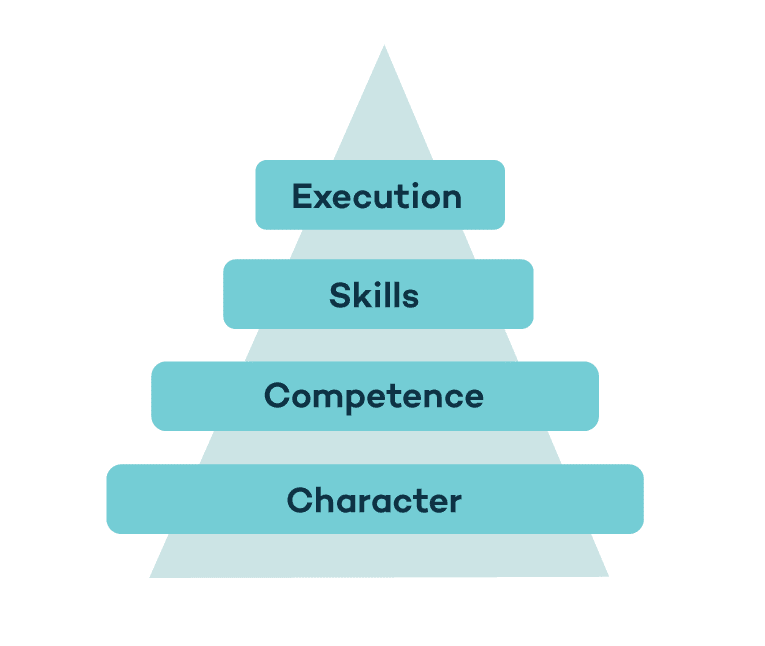
Execution – combined with experience, the accumulation of a high performers character, competence and skill level determines their ability to execute in a moment. They see execution as an opportunity to obtain feedback.
Skills – Often holding a position of a leadership or influence high performers are consistently scanning. They are proactive and eager to refine their current skillset and acquire new and more relevant skills.
Competence – High performers back themselves while striving to produce higher quality. A common trend evident is that they are relentlessly curious in search of new insights to develop their true competence.
Character – At the base there is daily significant growth potential. High performers consistently nurture this space, more often in the shadows. They know that their true quality is always left behind the room they leave.
Key opportunities
In today’s dynamic performance landscape, three key development opportunities stand out:
- Why, What and Who
Understanding why you do what you do, what you aim to achieve, and who can support you is crucial to maximising your potential. These questions serve as a compass for personal growth. - Cultivating Deeper Relationships and Fostering Trust
Research consistently highlights the centrality of trust in all social interactions. Trust enhances collaboration, encourages vulnerability, improves communication, and fuels idea generation. Deepening your relationships can have far-reaching personal and strategic benefits. - Objective Goal Measurement
Consider the difference between the 2D roadmaps of the past and the current 3D versions on your phone. Which of them offers greater clarity? Which helps you get where you’re going faster? Clear, detailed goals enhance efficiency. They provide a roadmap that not only guides you but also identifies potential risks, opportunities, timelines, and obstacles to be aware of.
High performance is not always easy to define or achieve, but you know it when you see it. Those who do achieve it will always stand out.
More on Peak Performance
How to Achieve Peak Performance
Ready to take your next step toward peak performance? Get in touch: